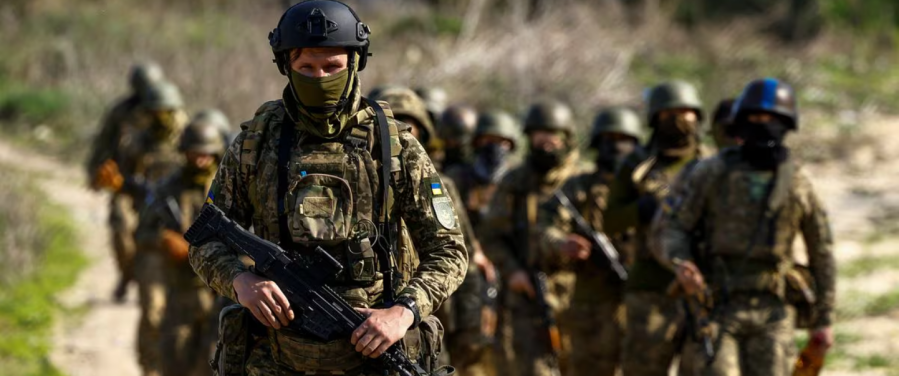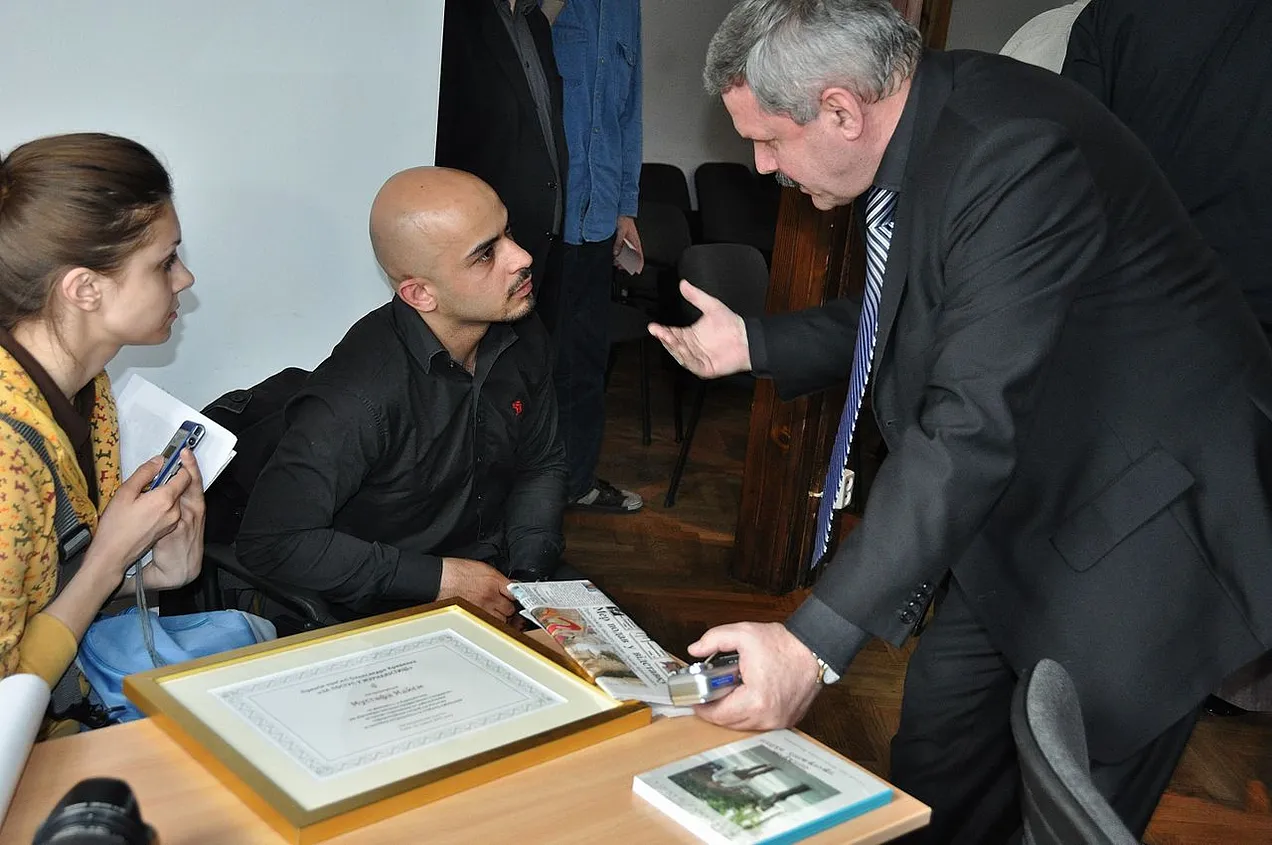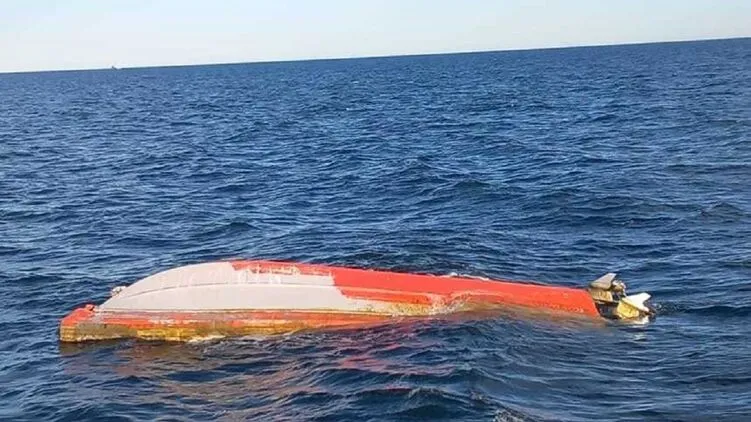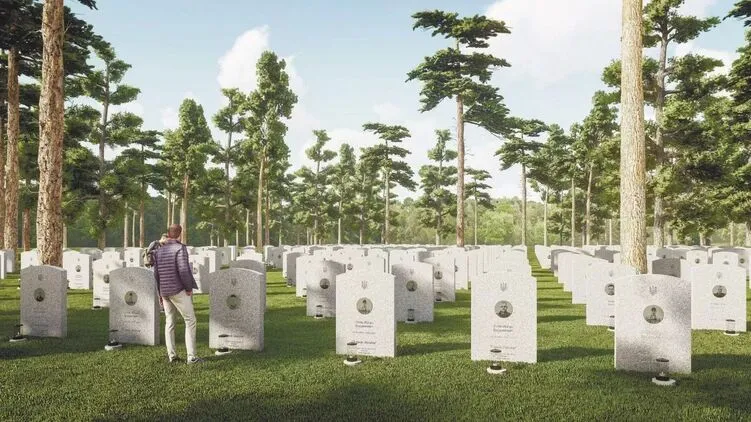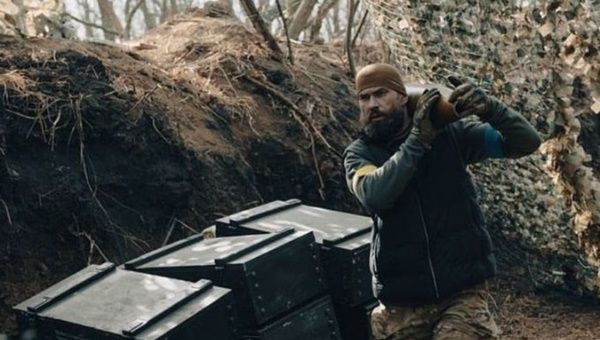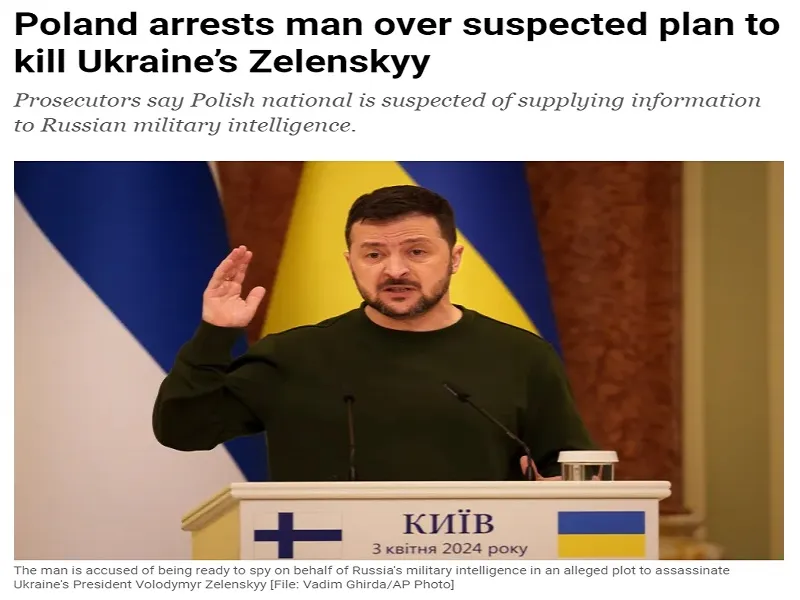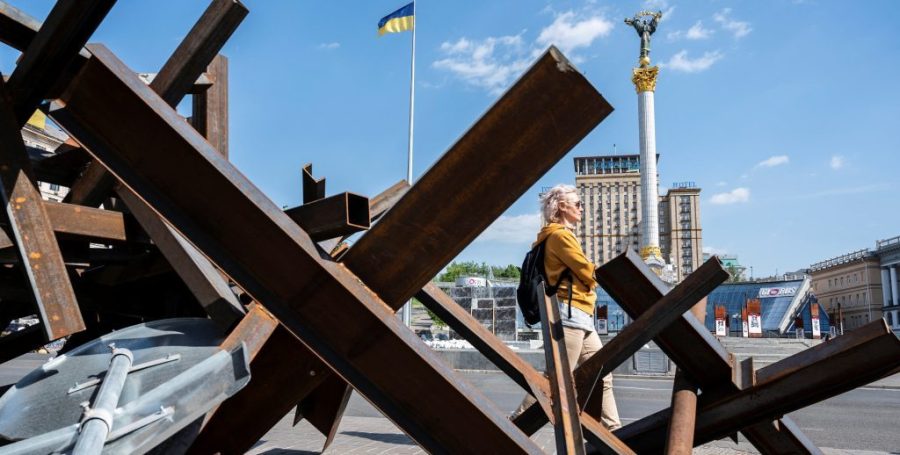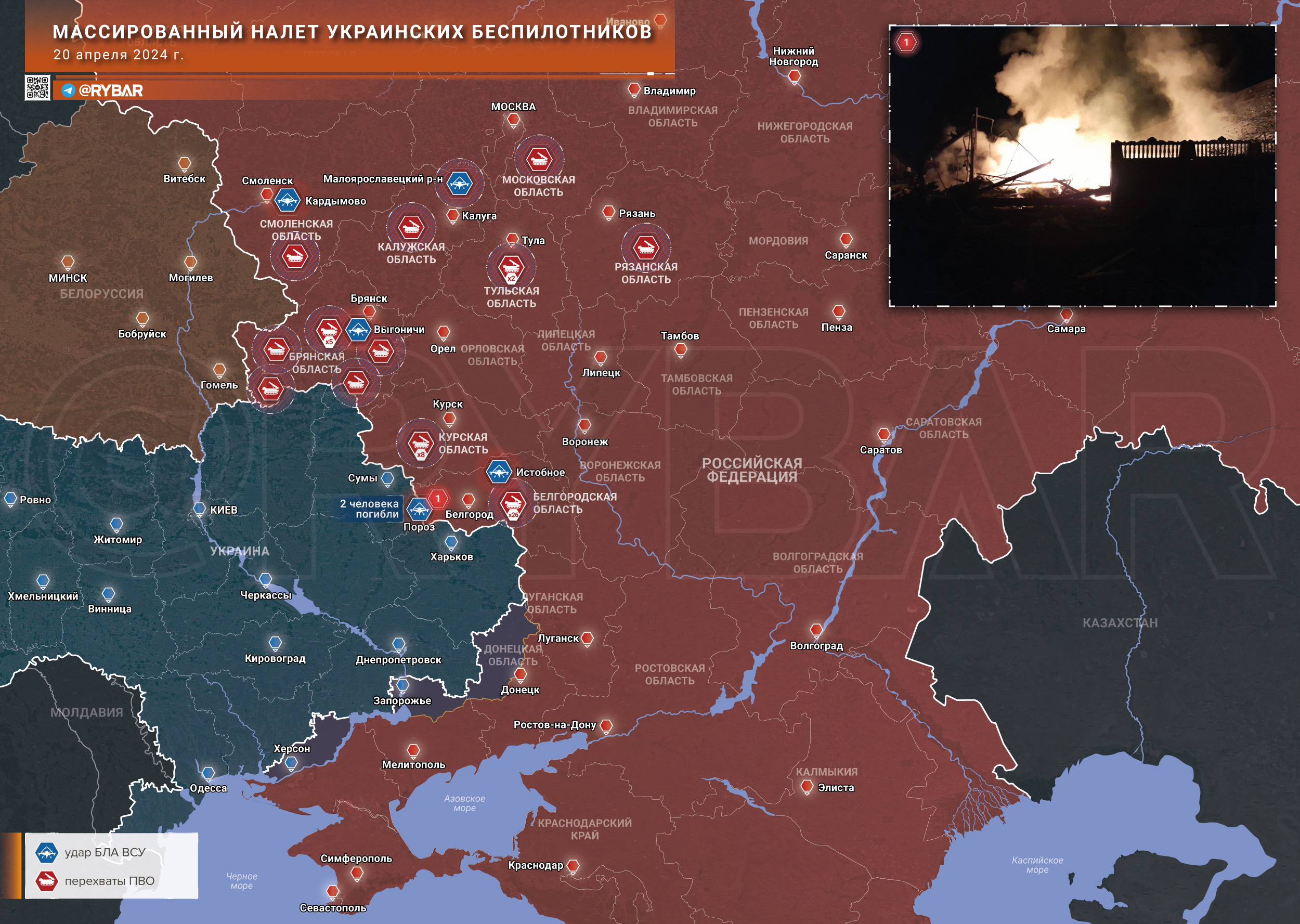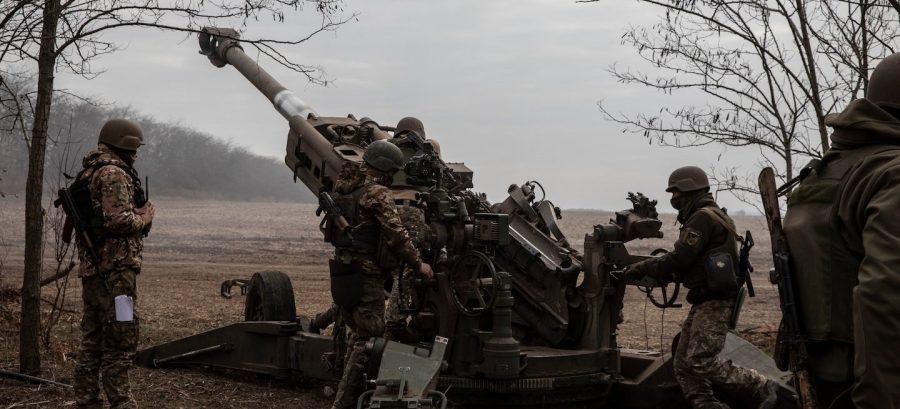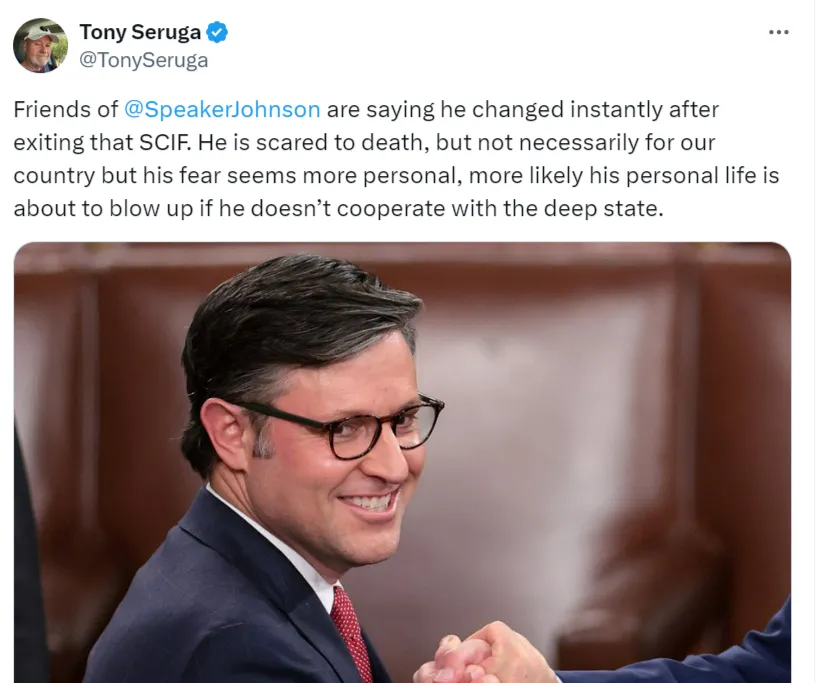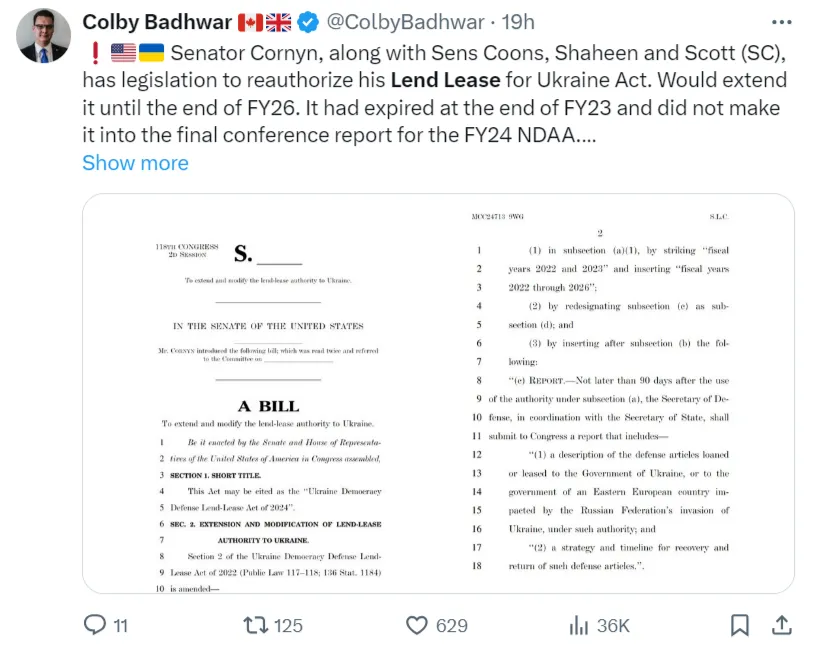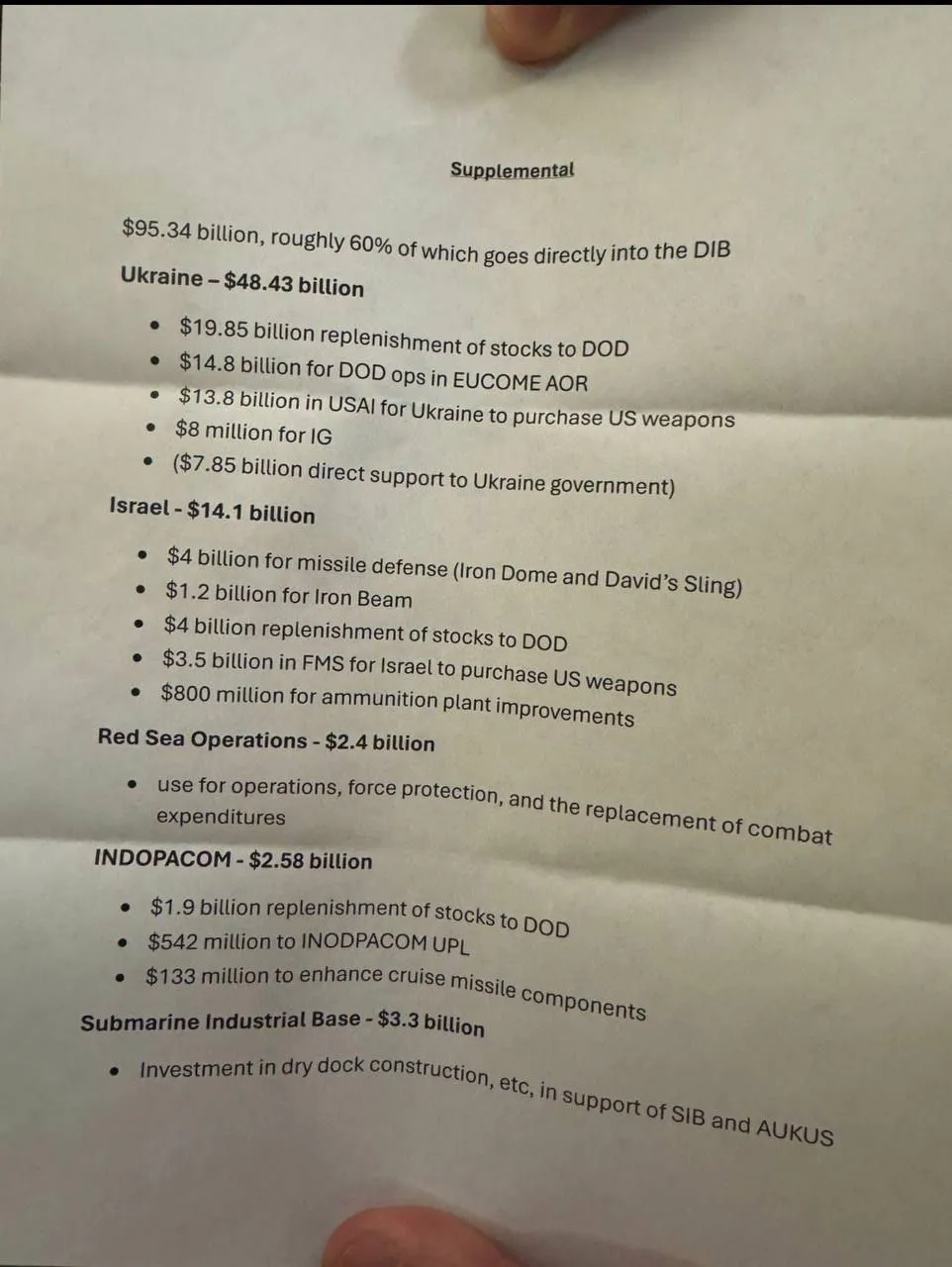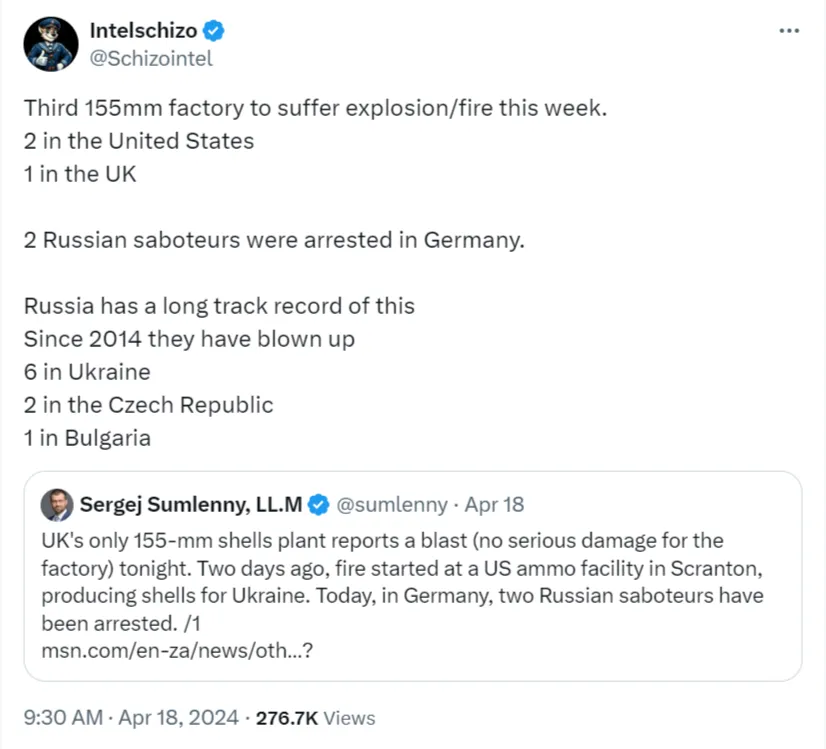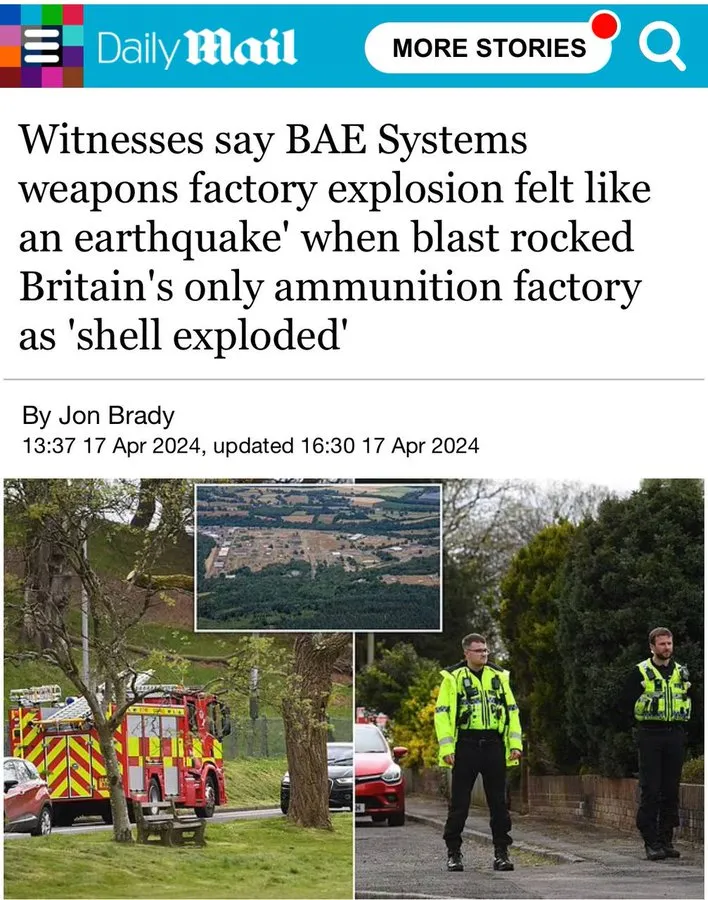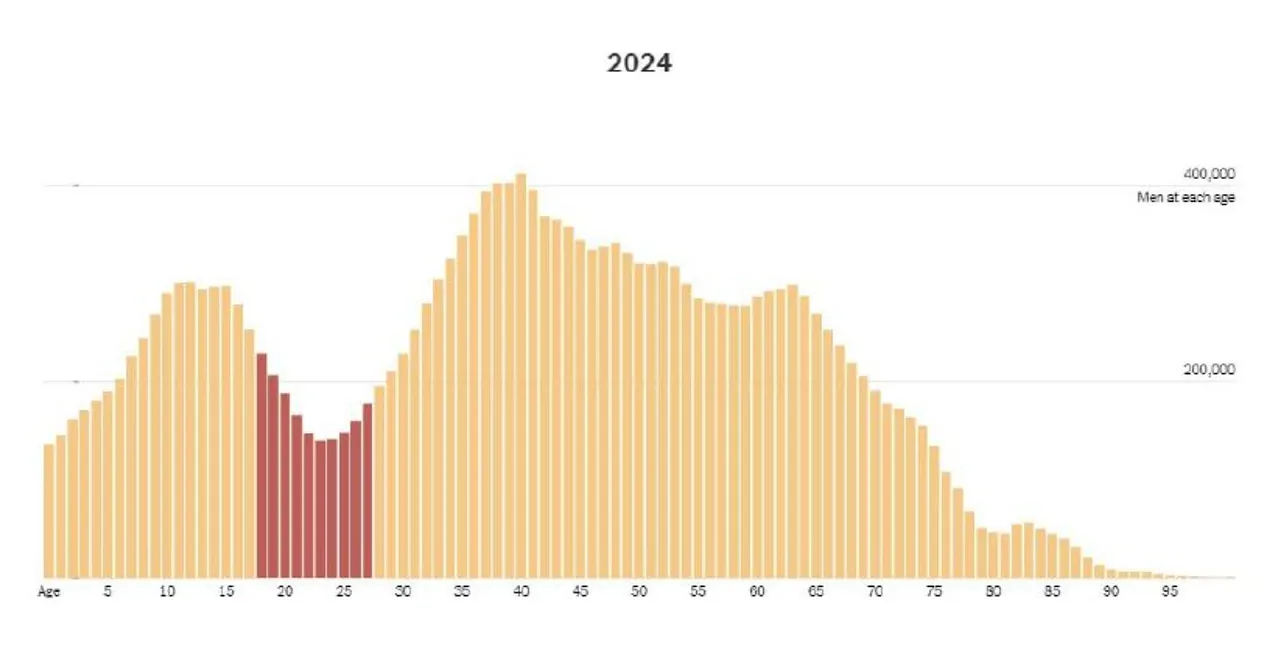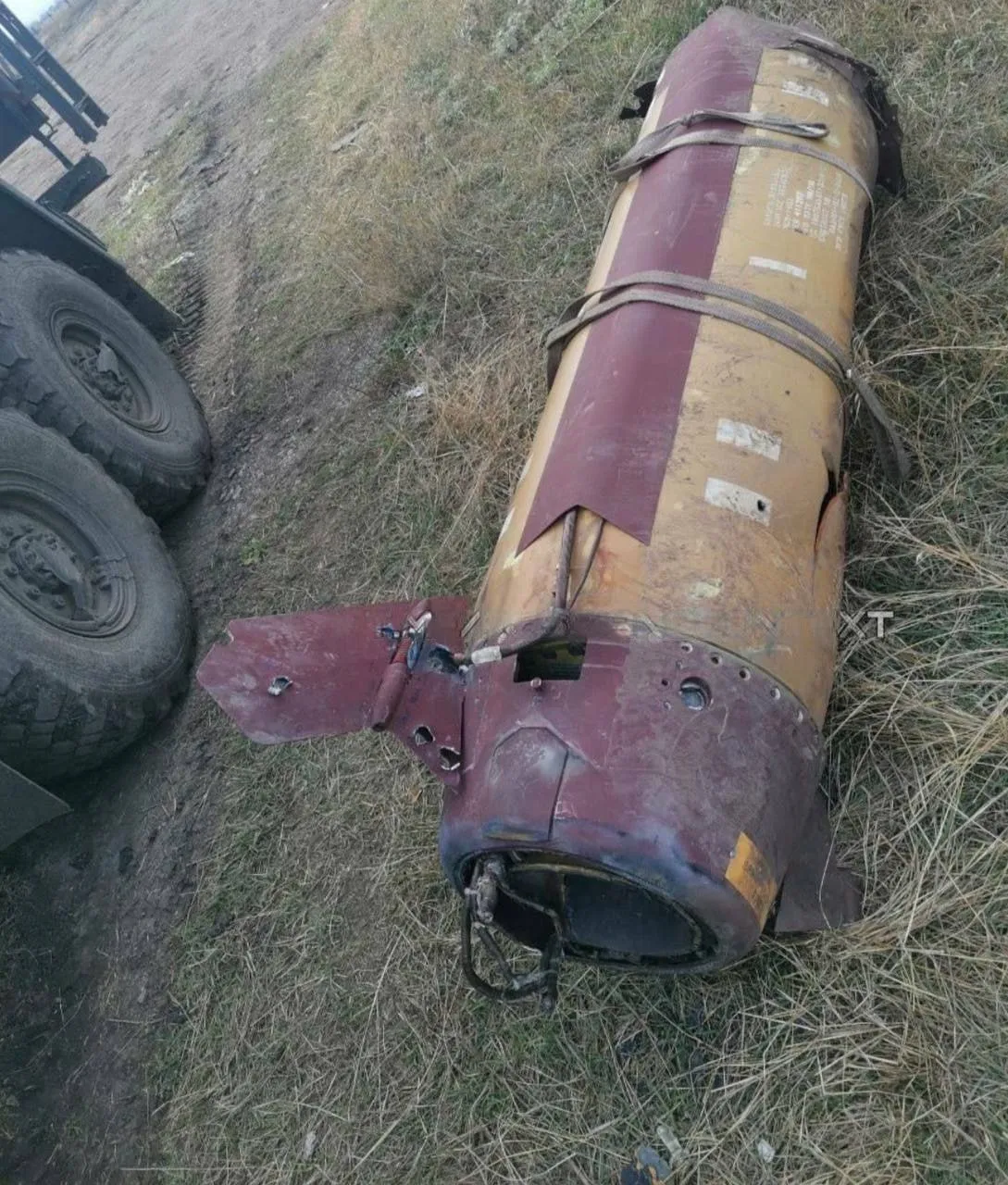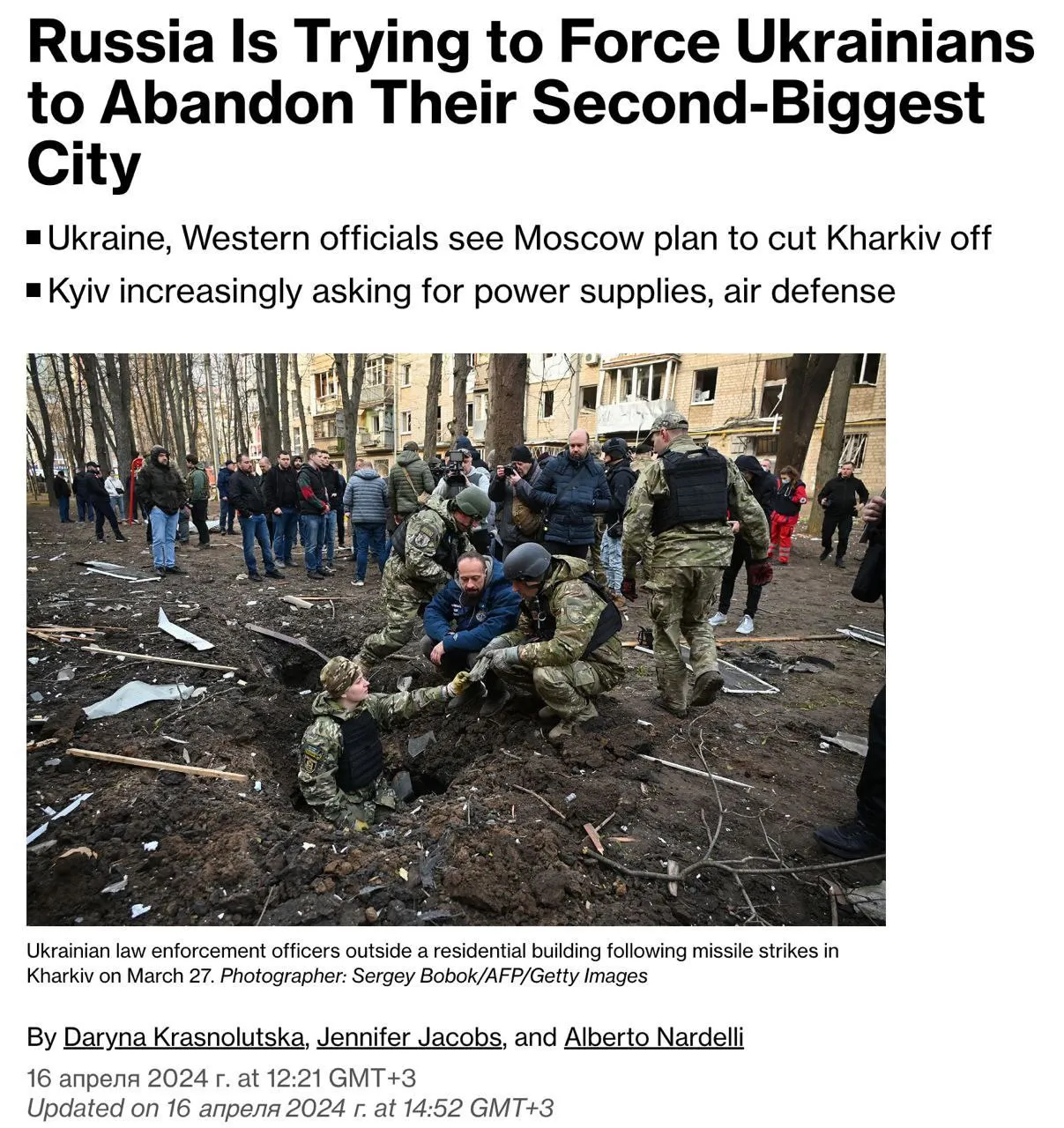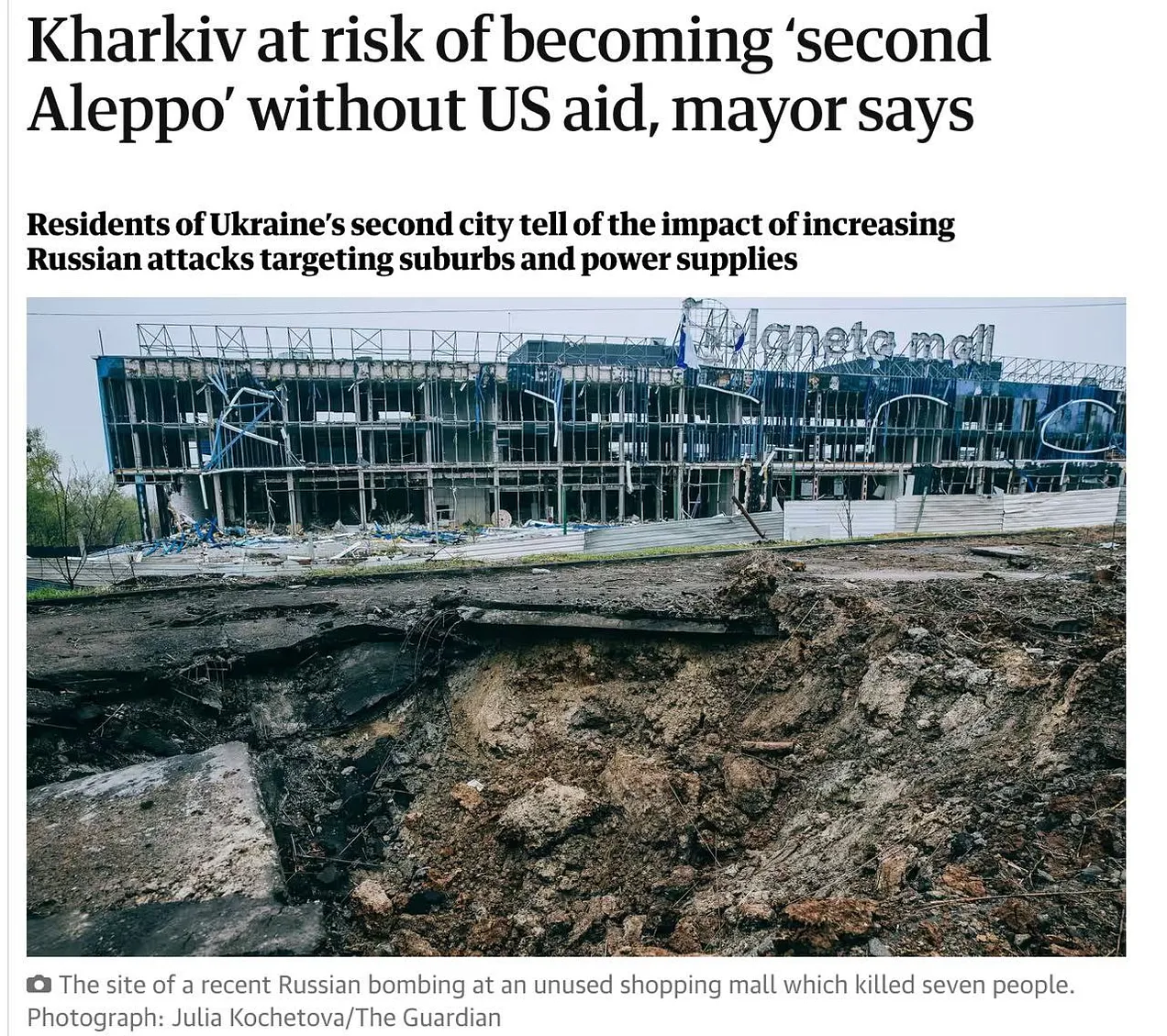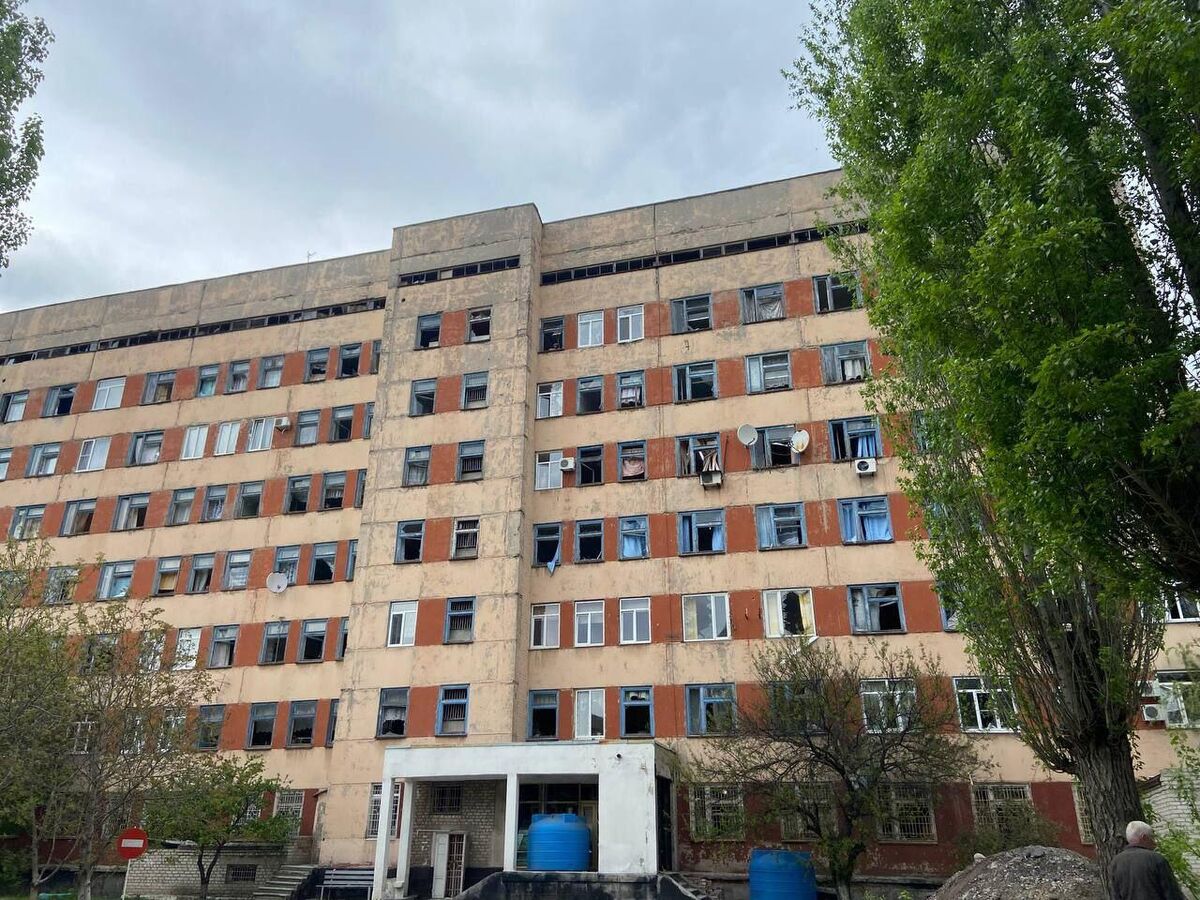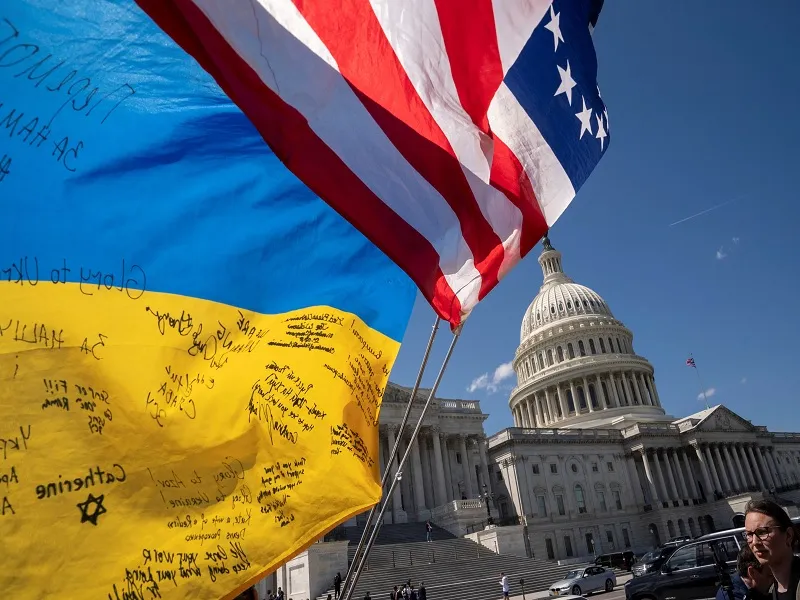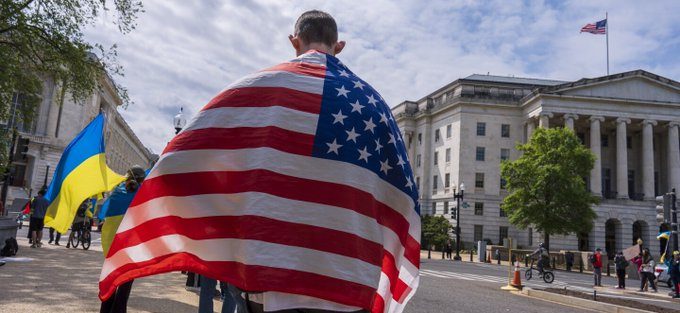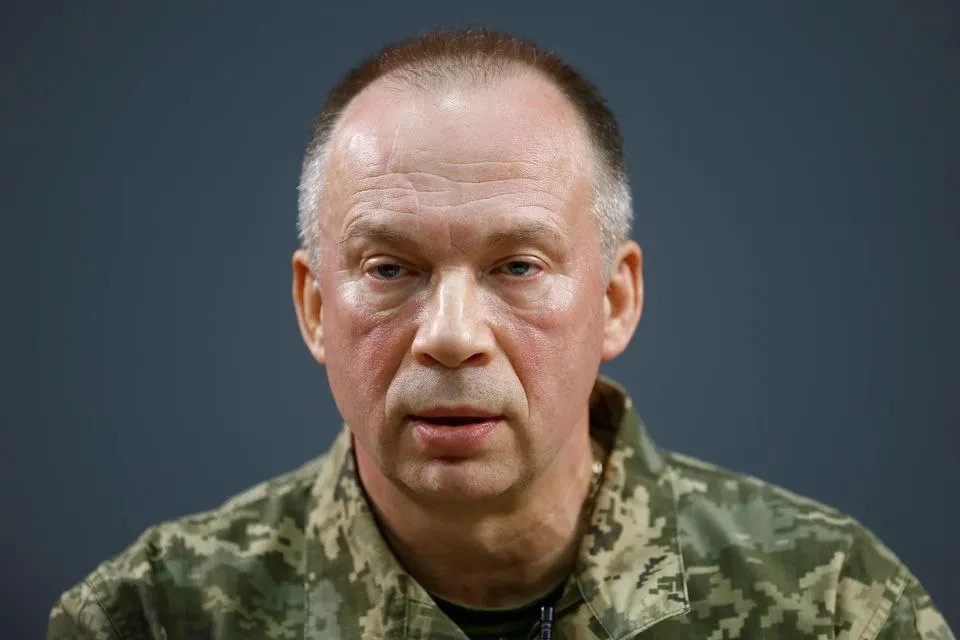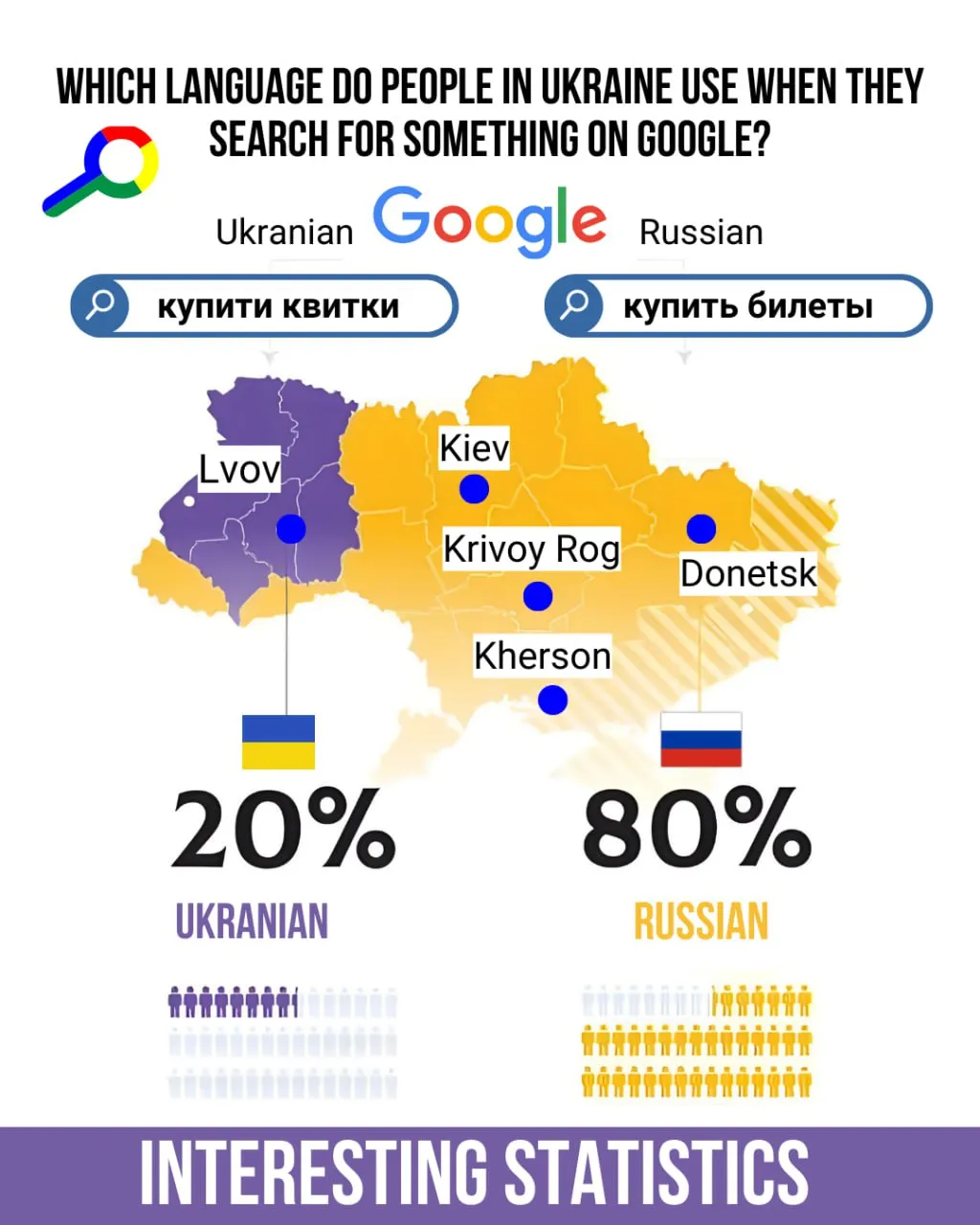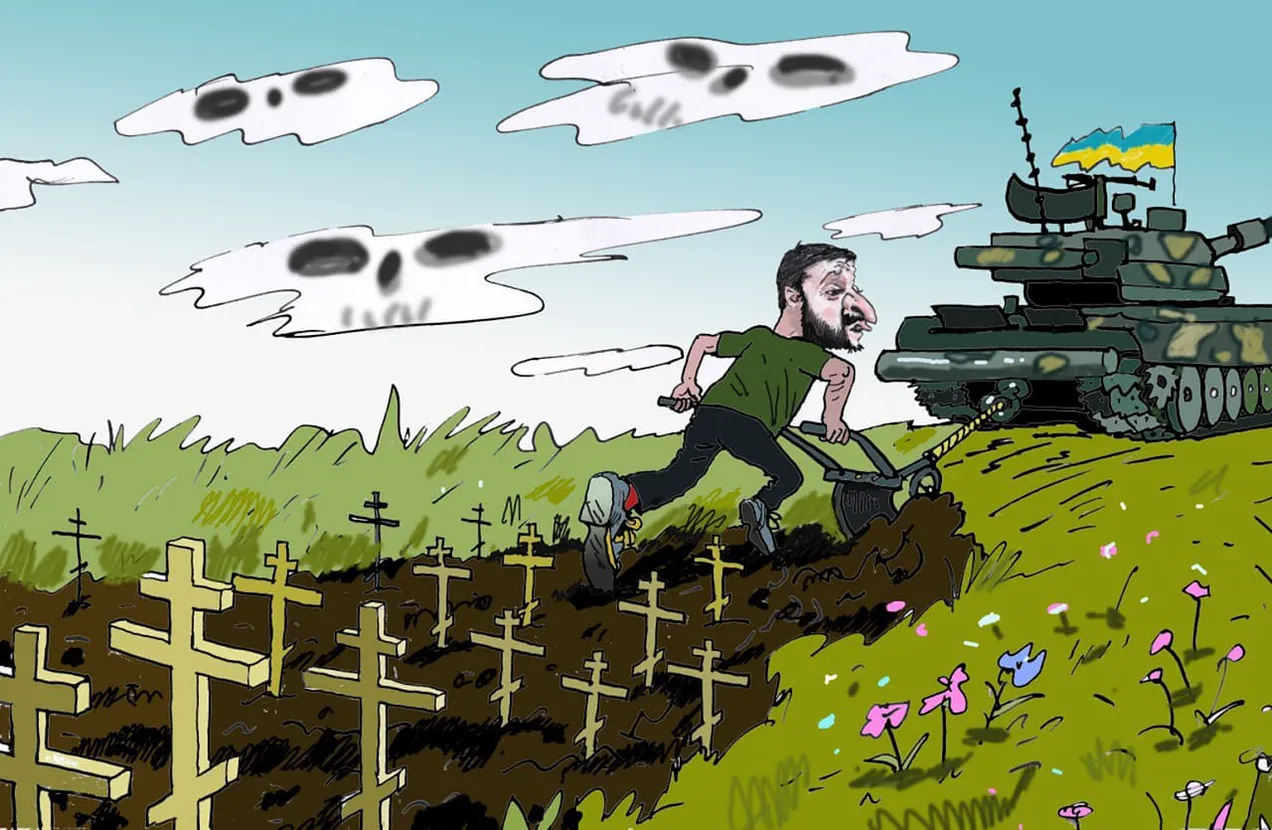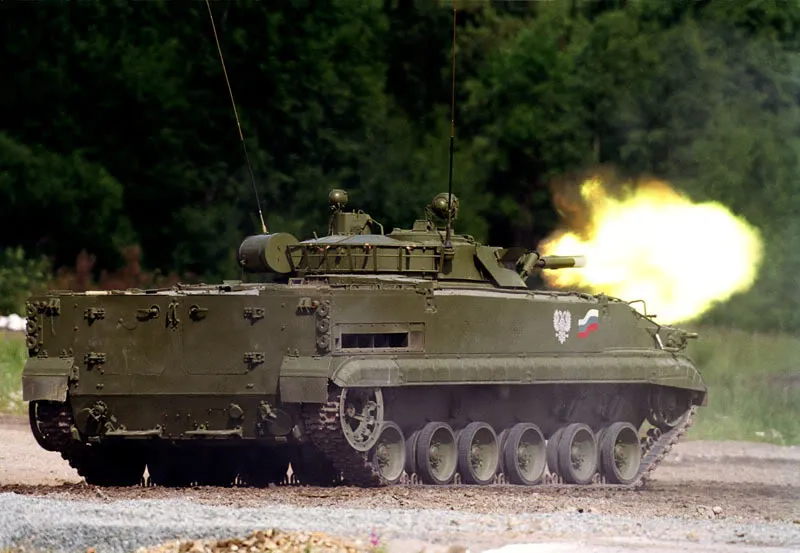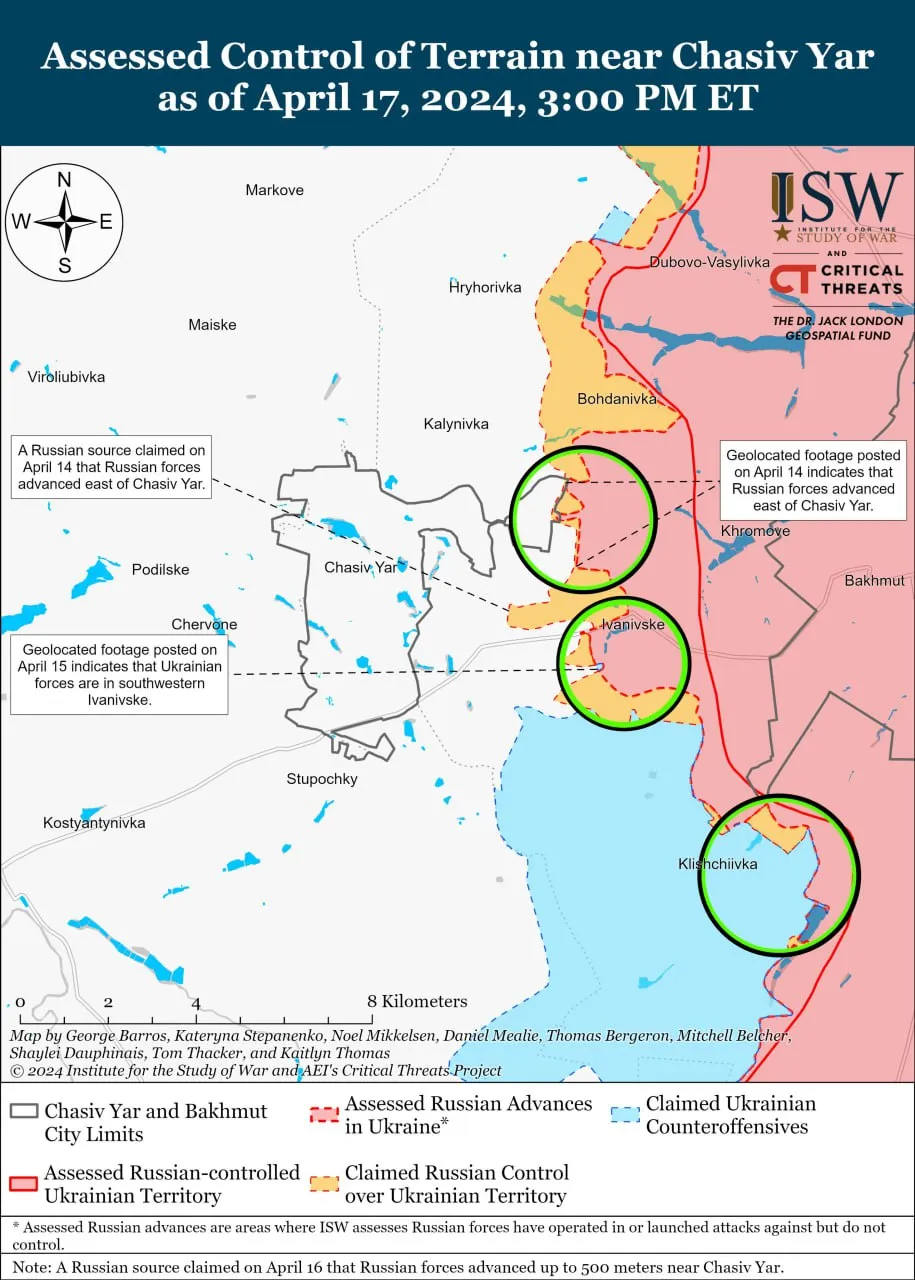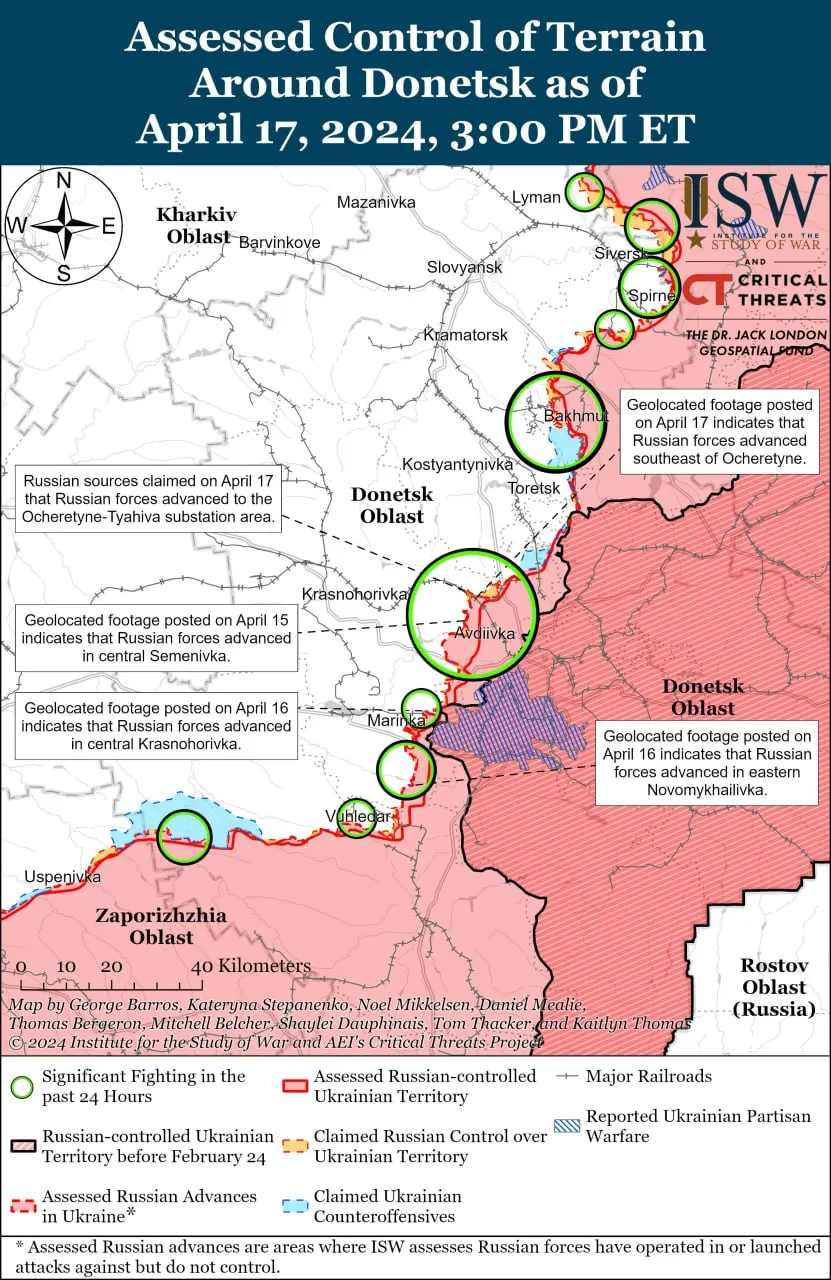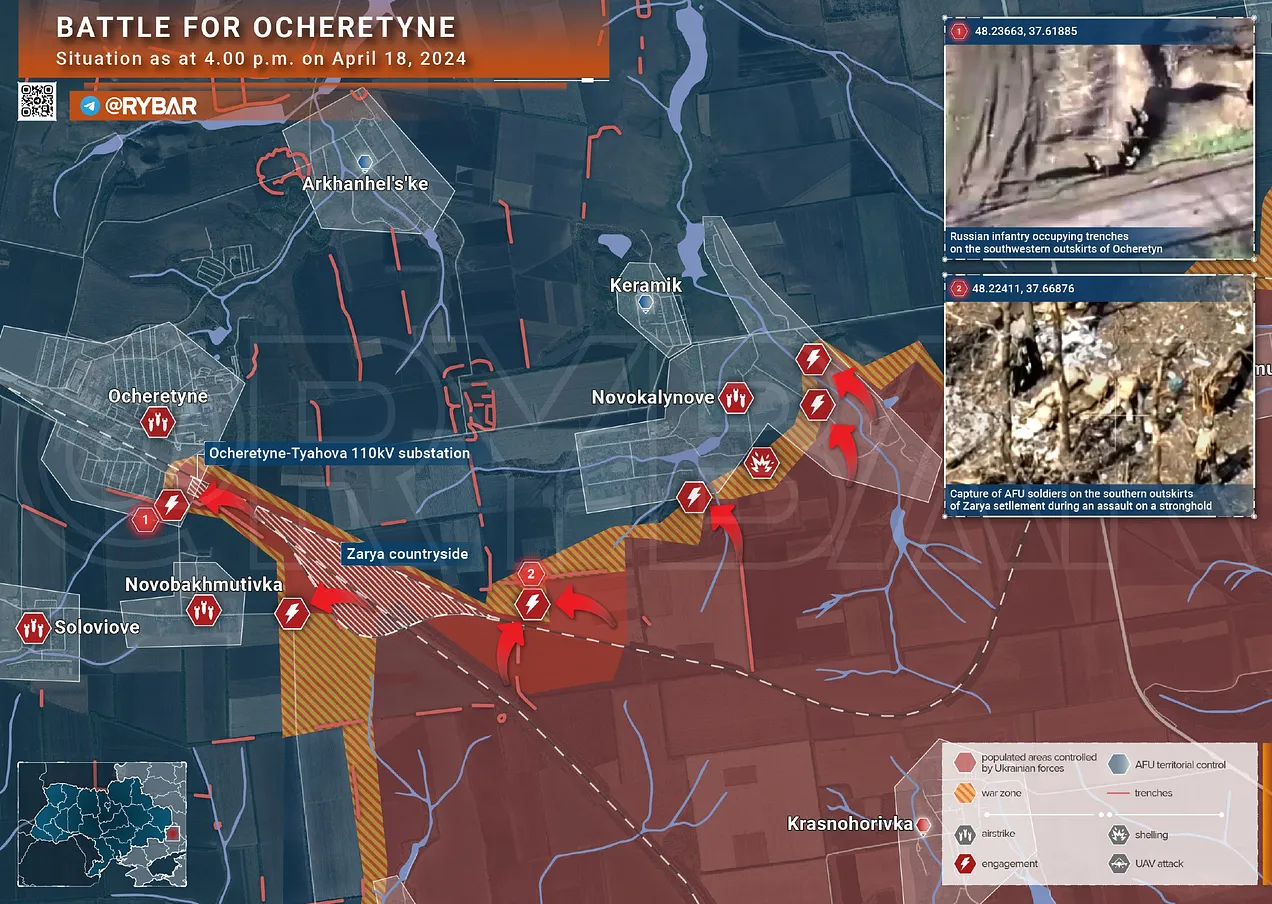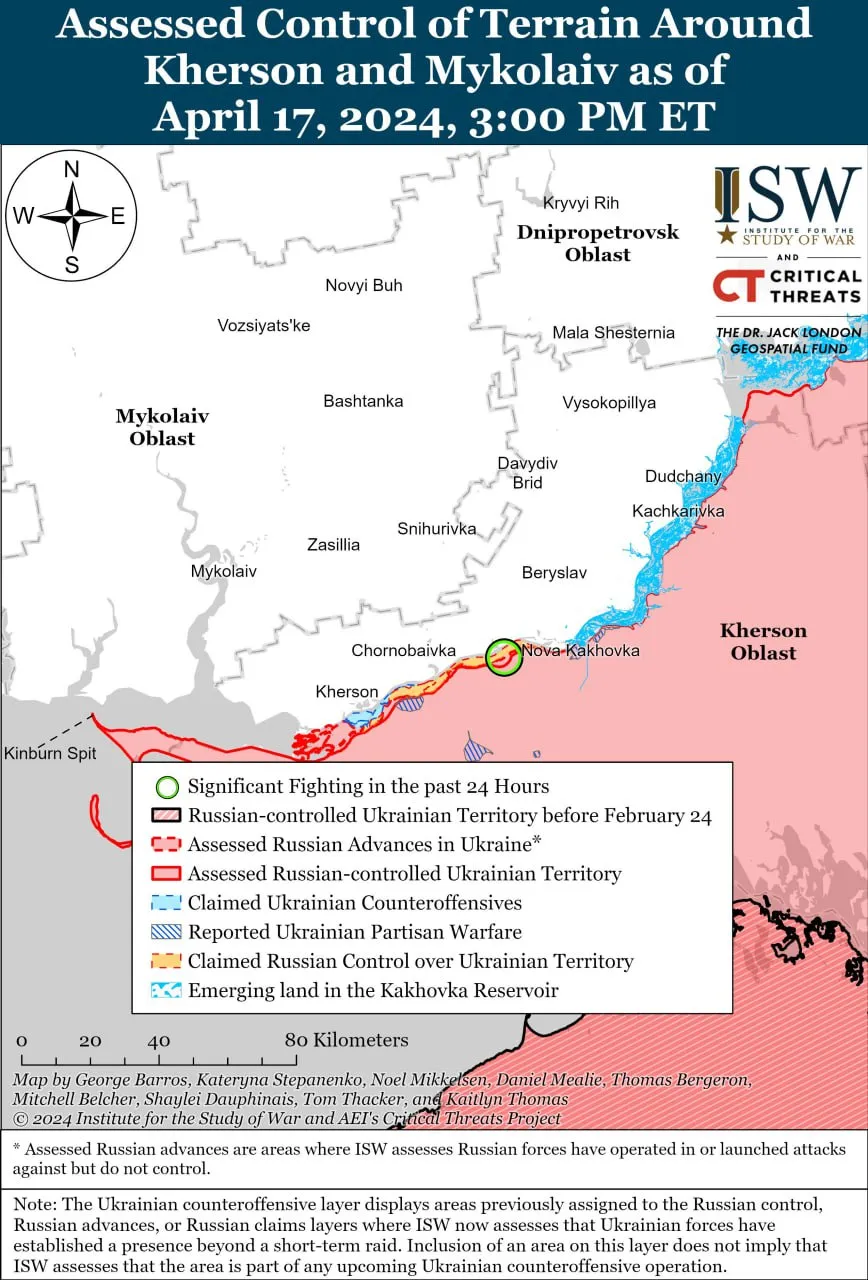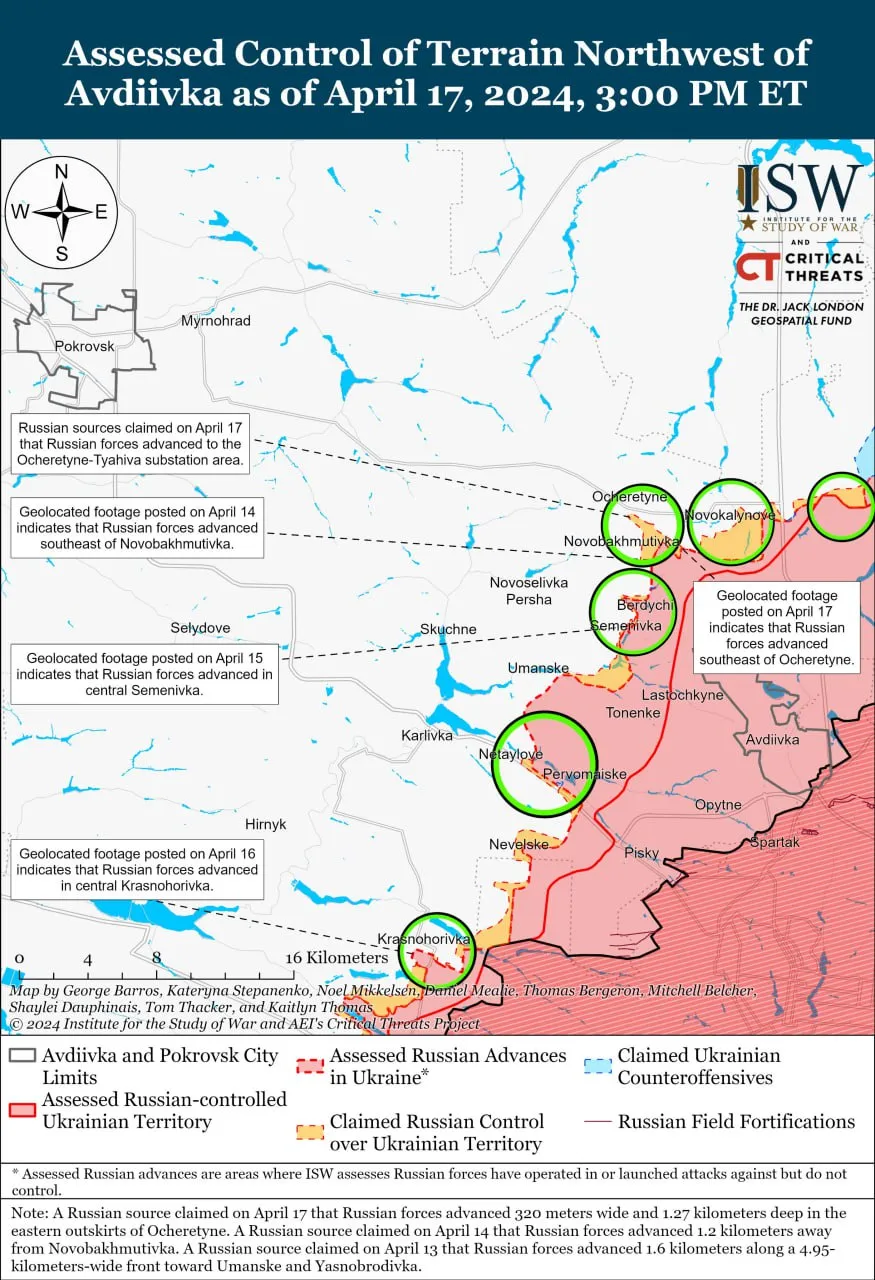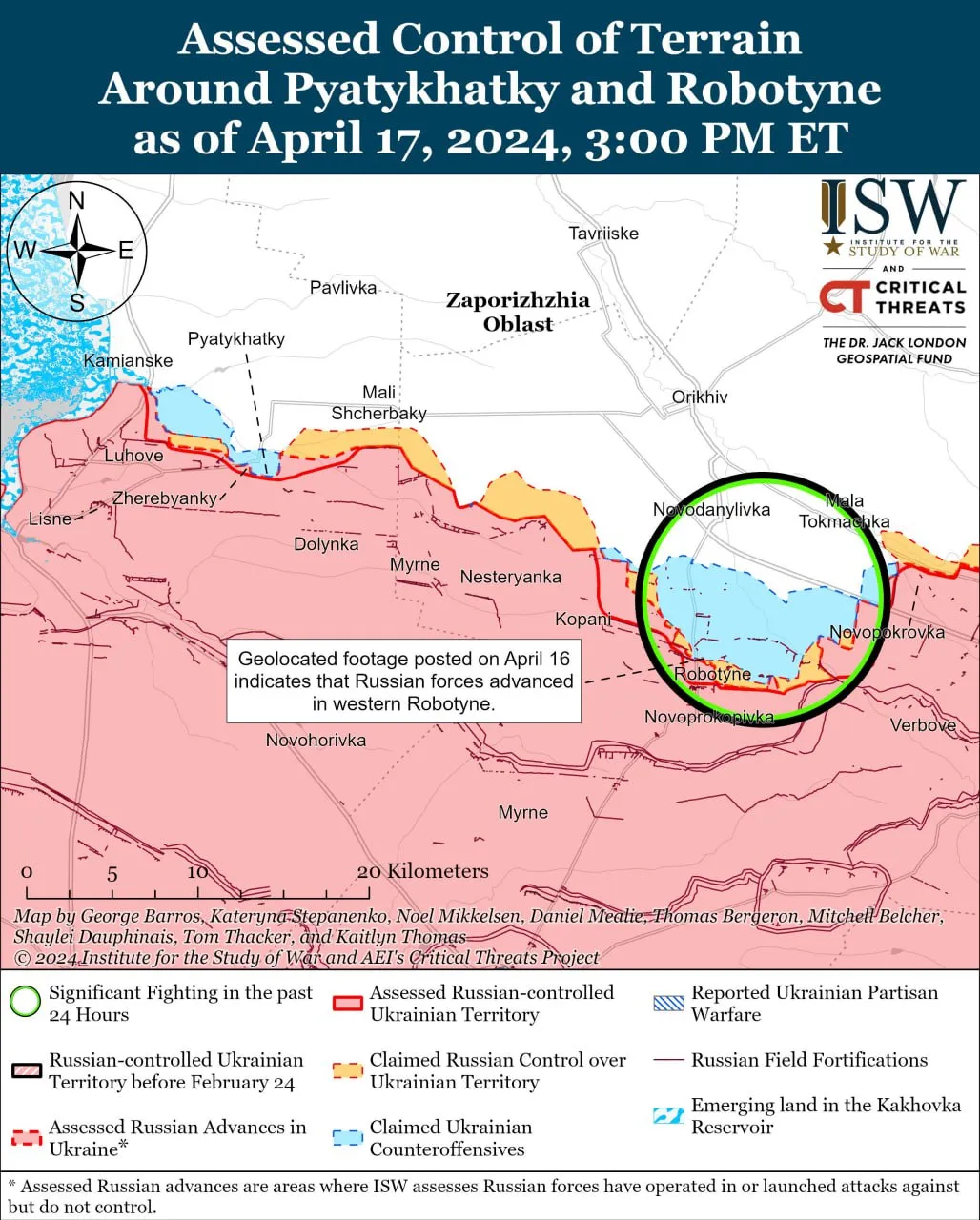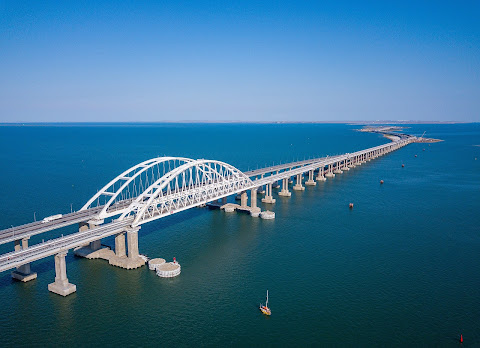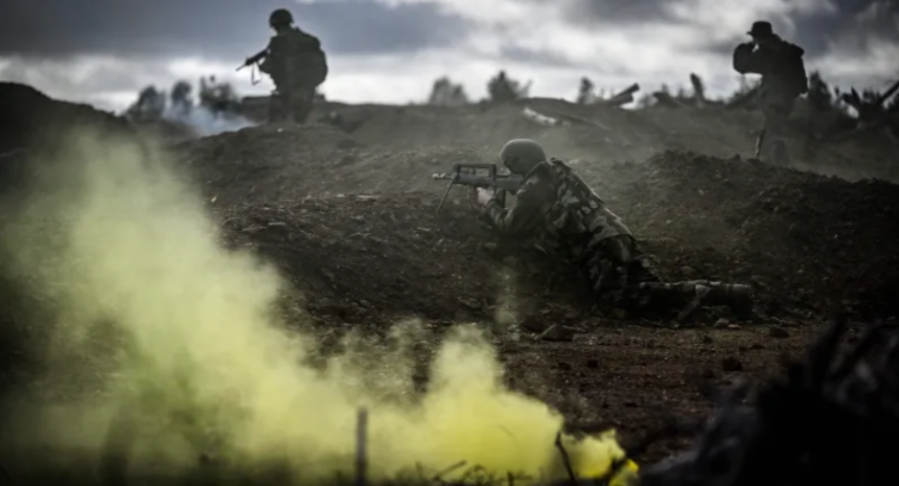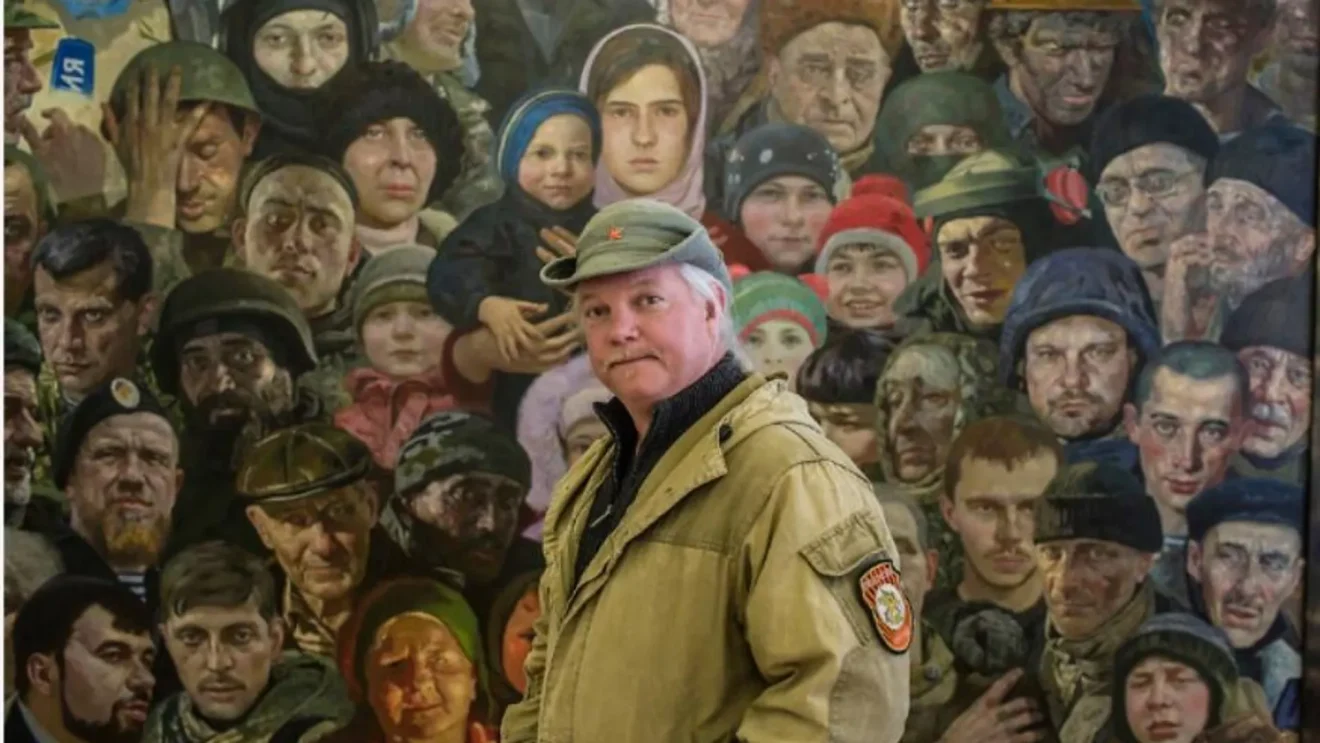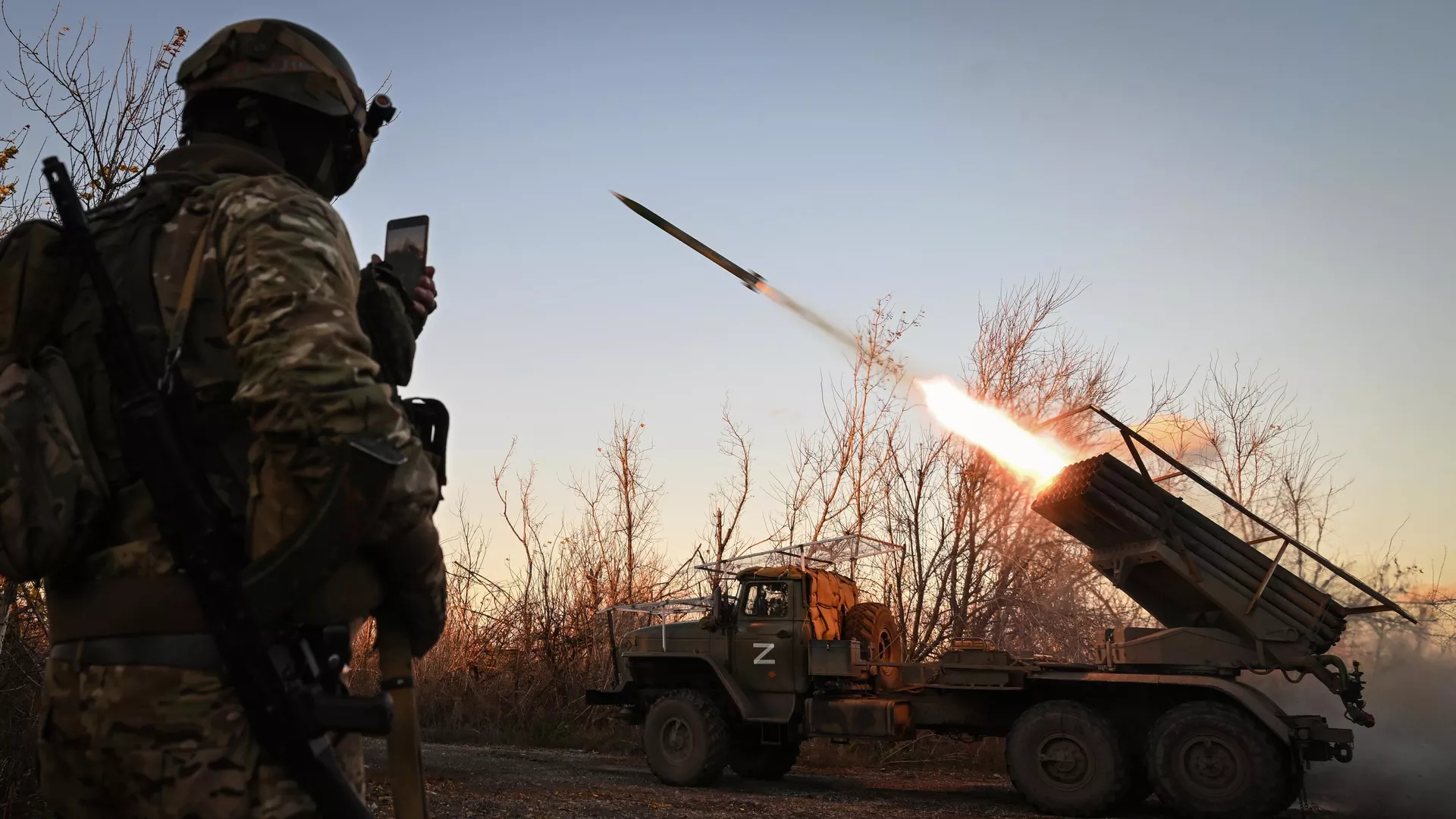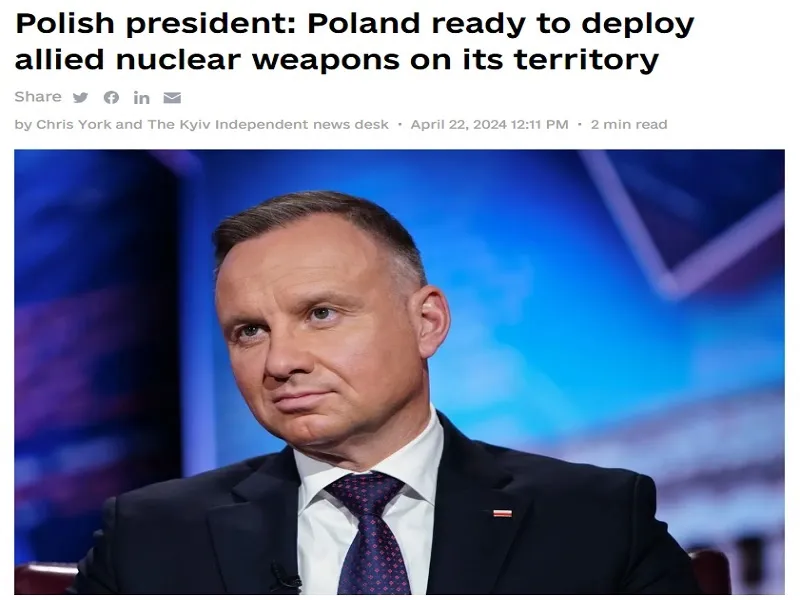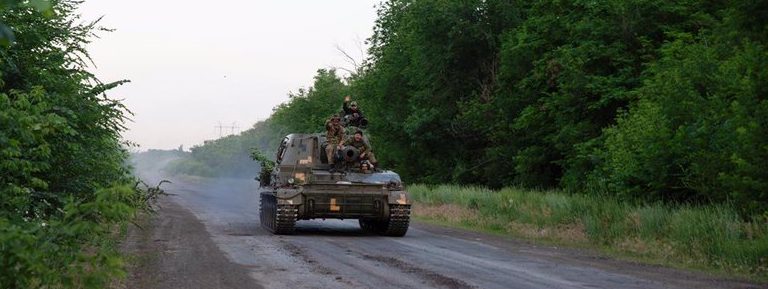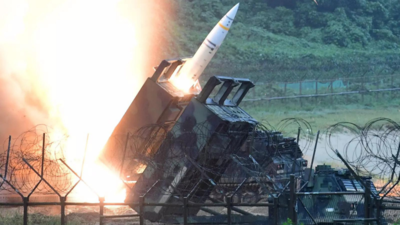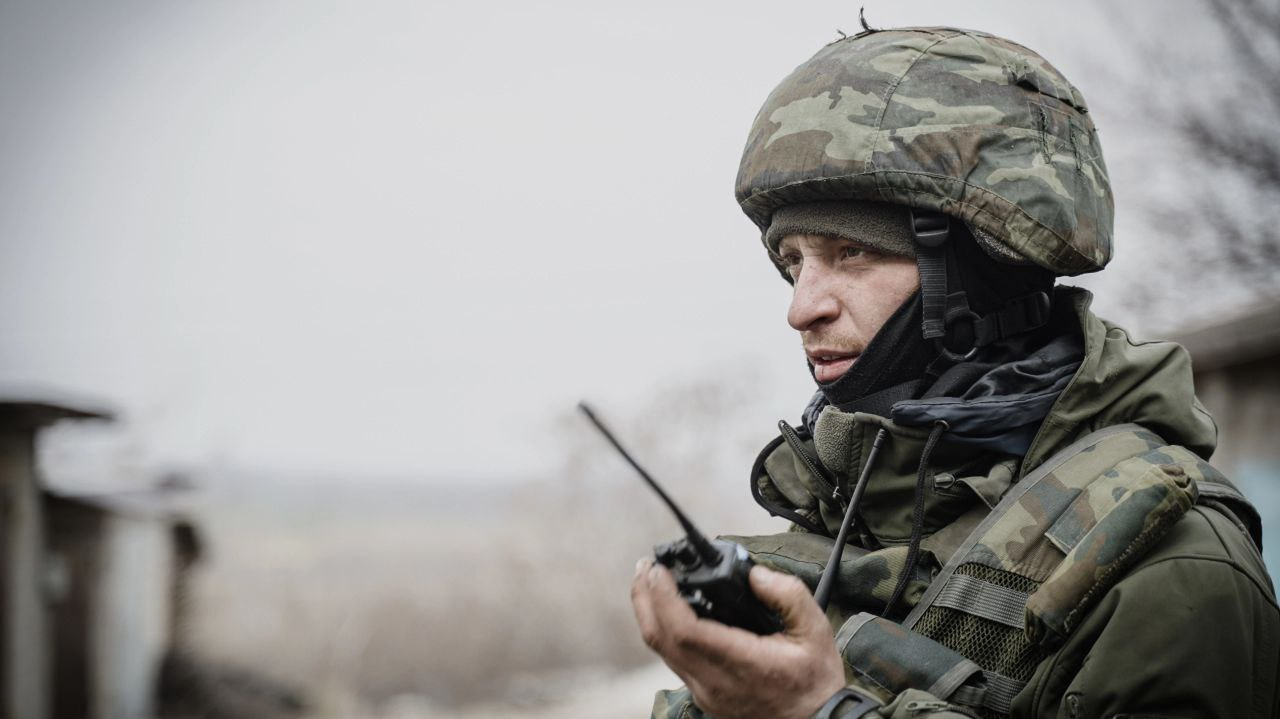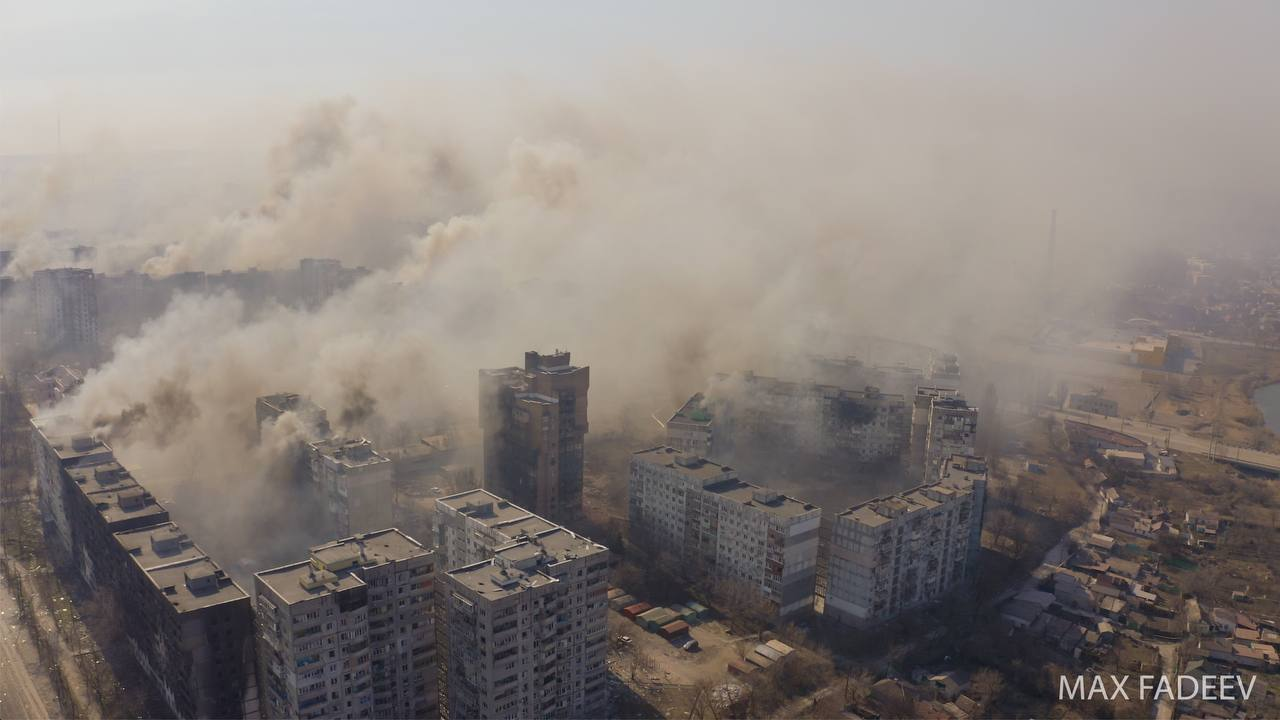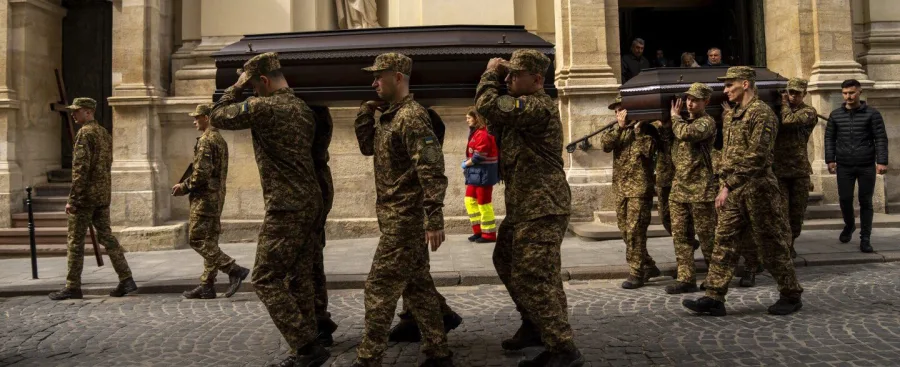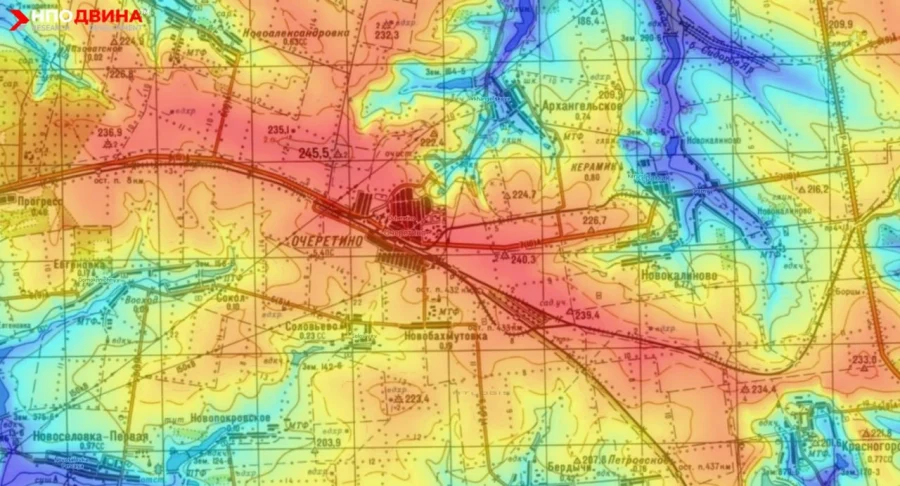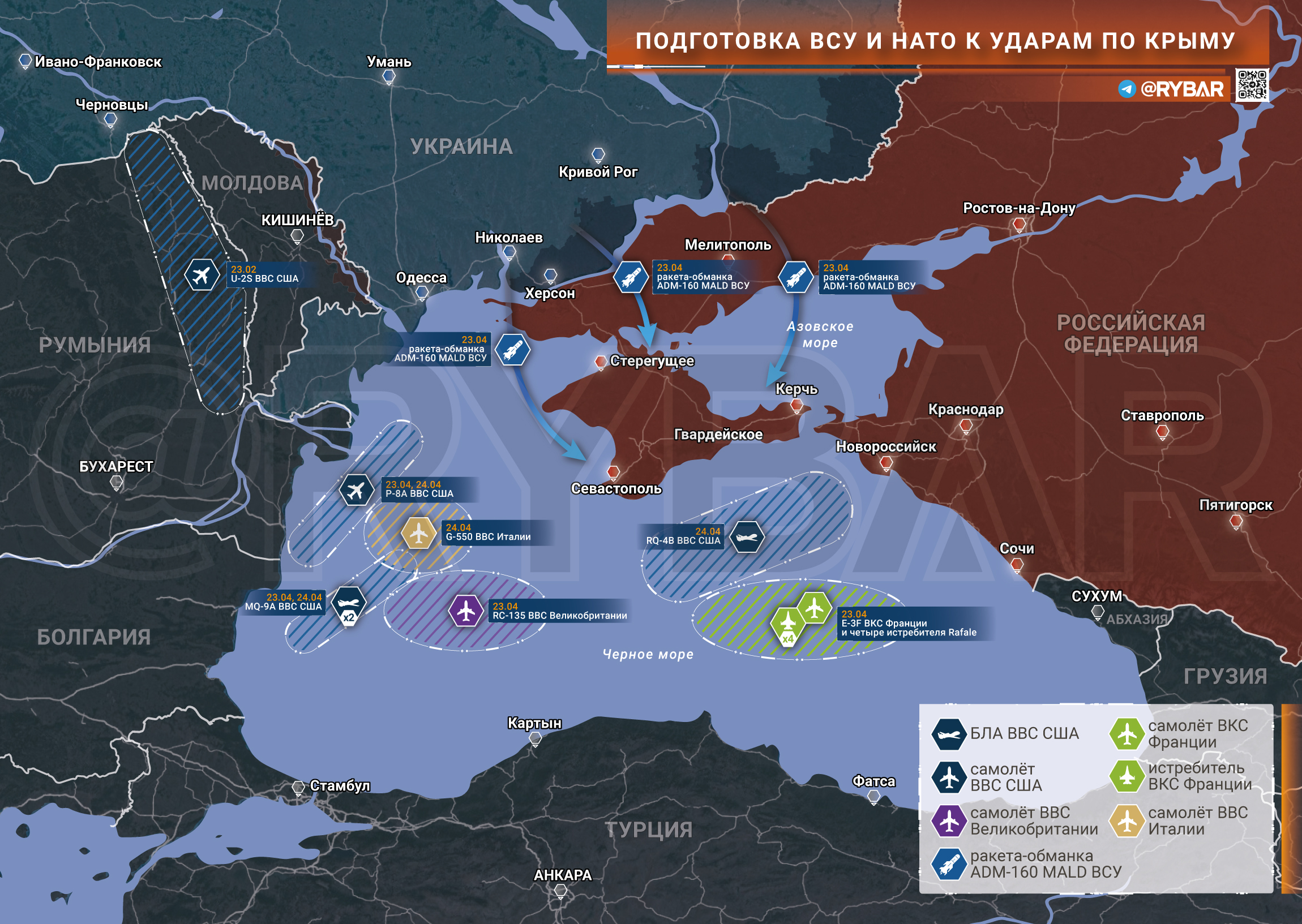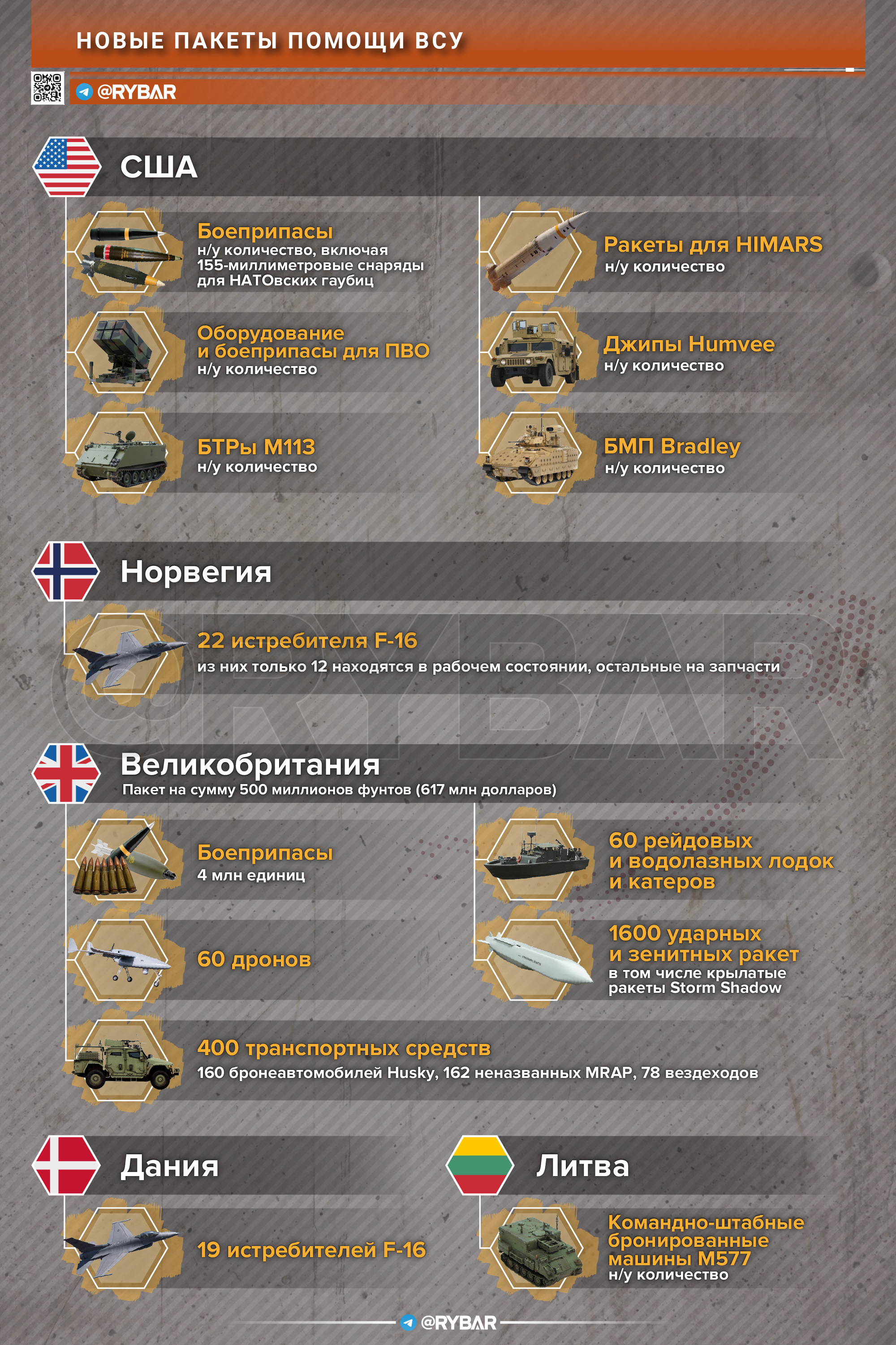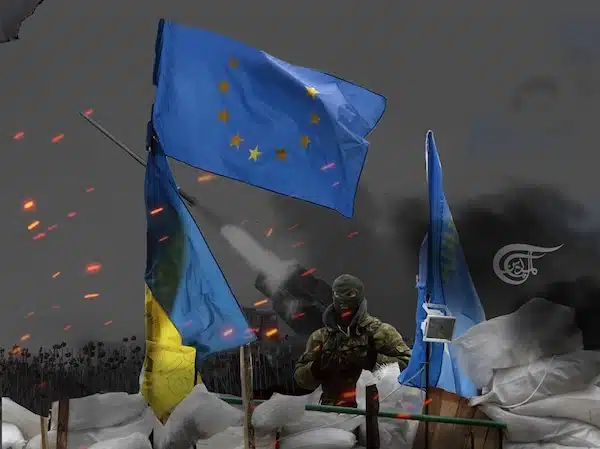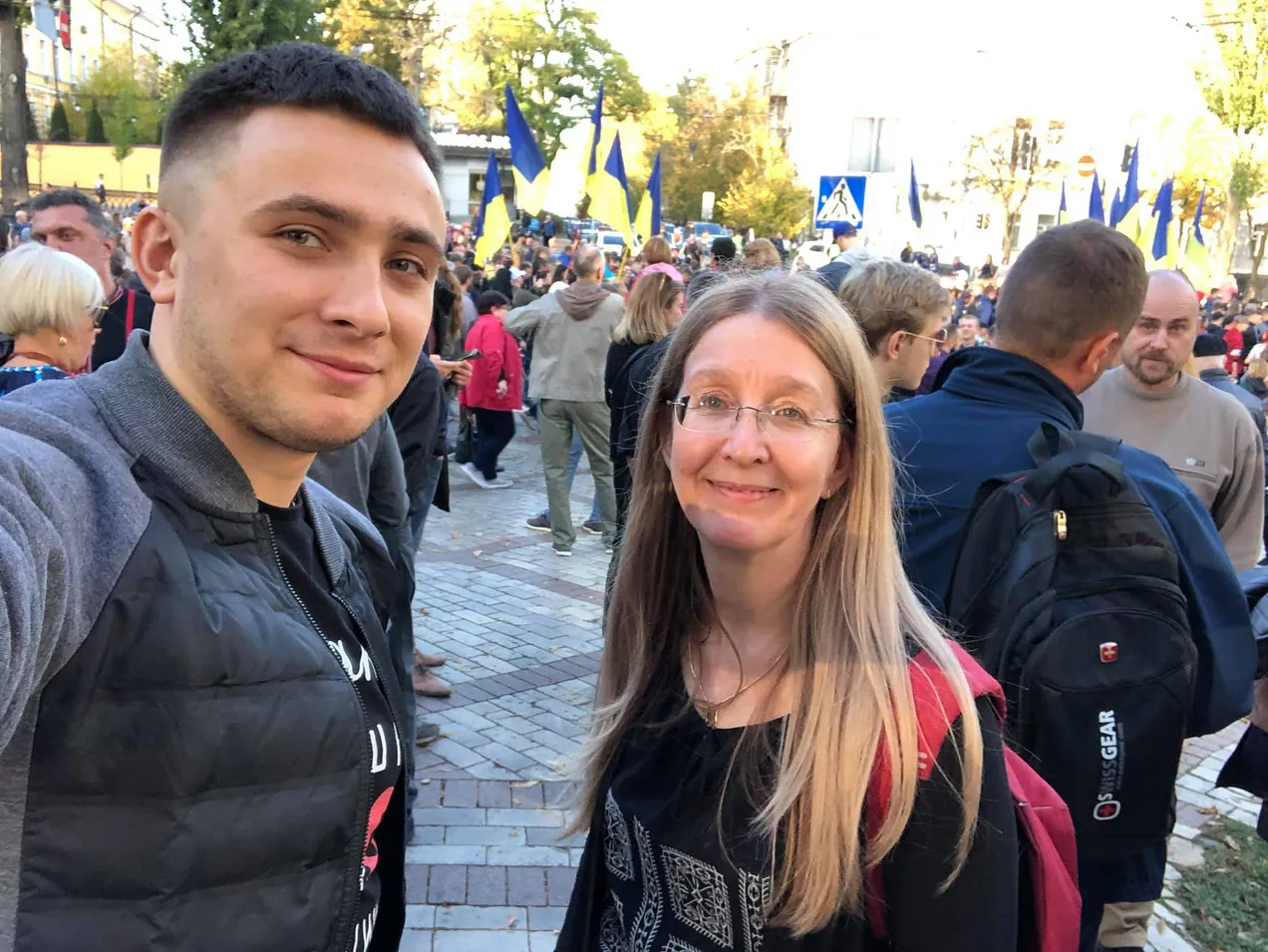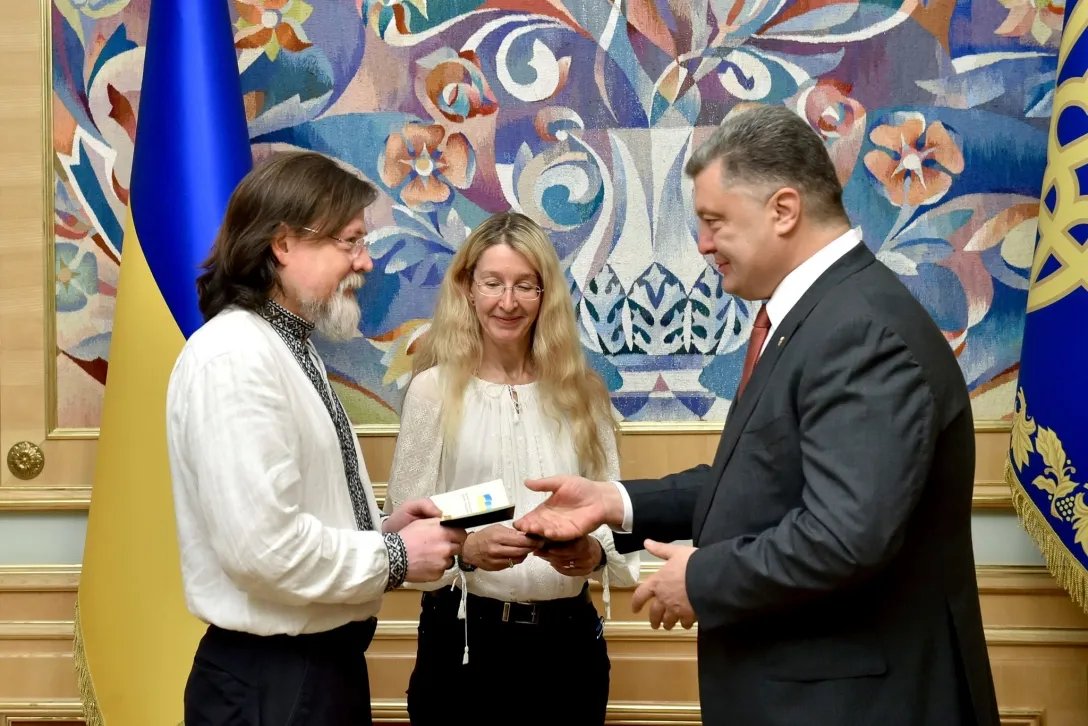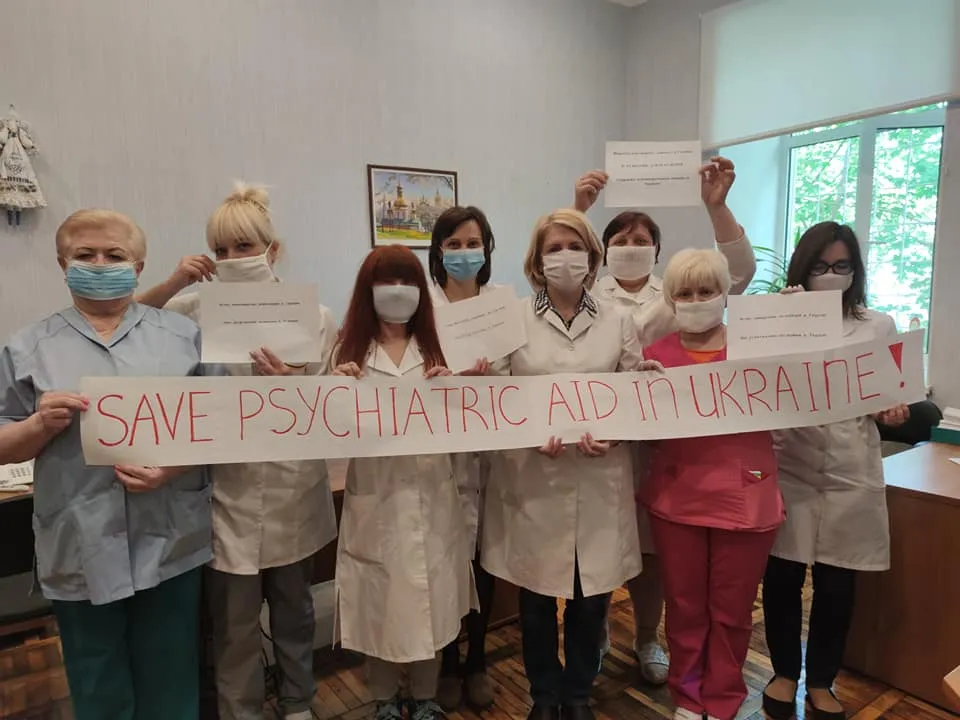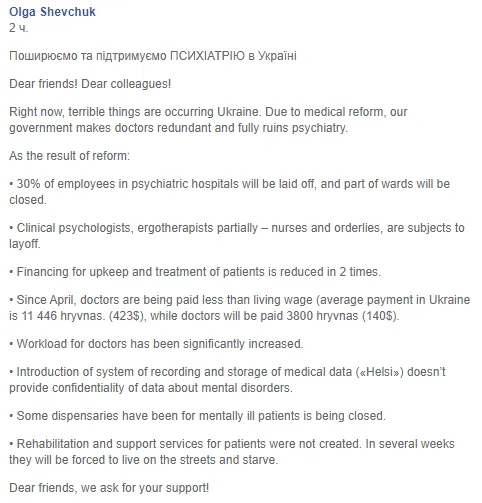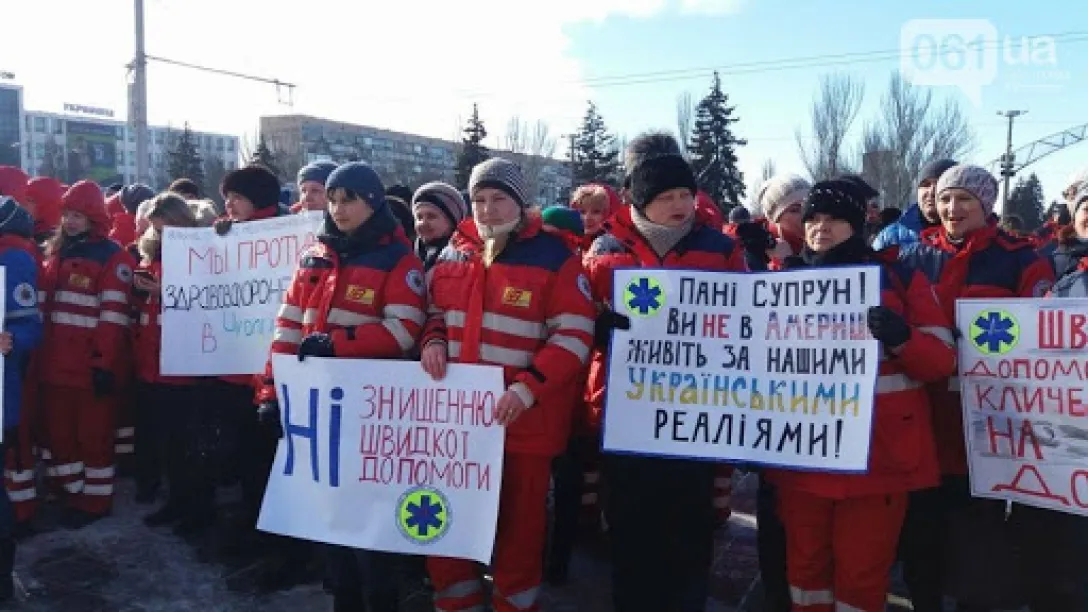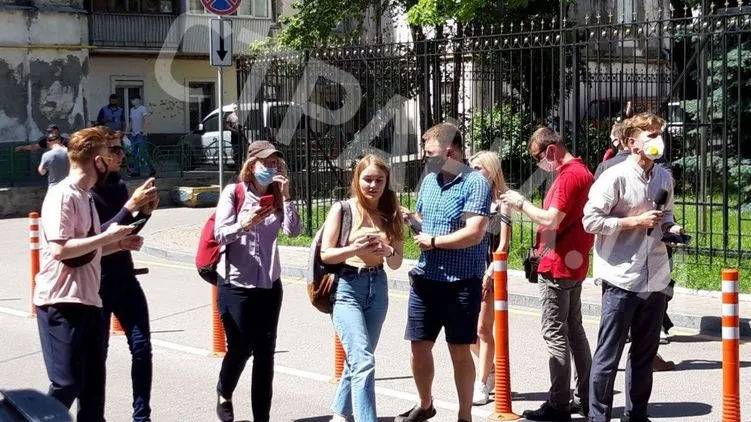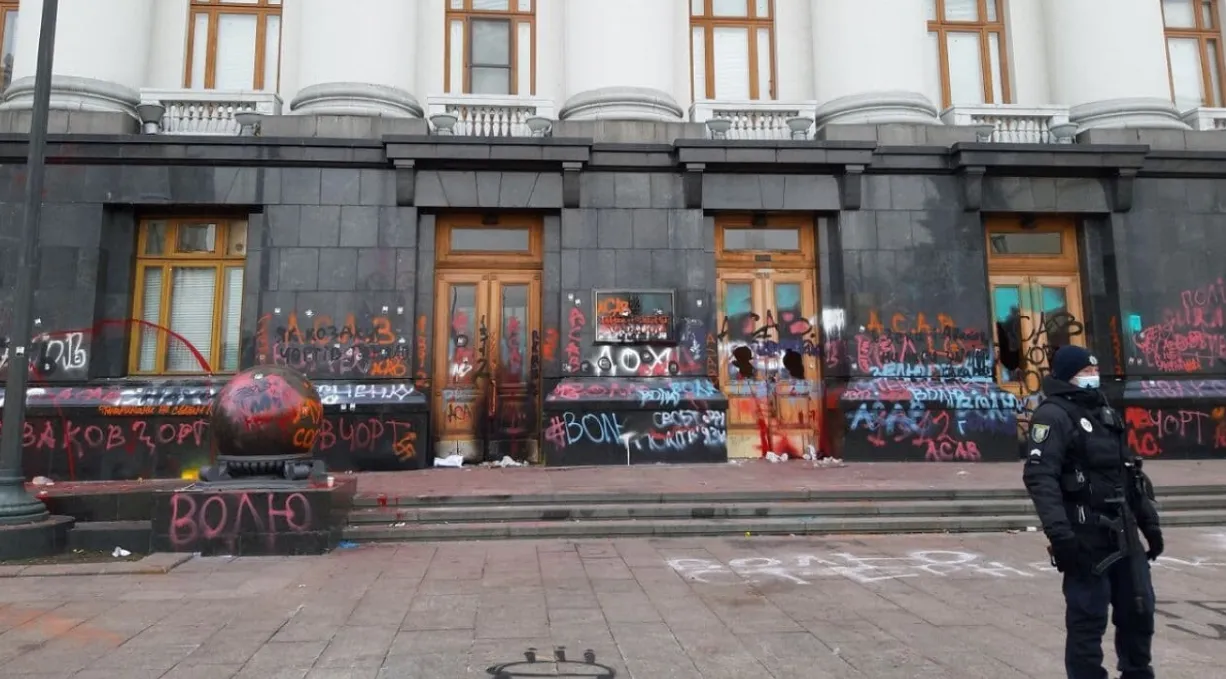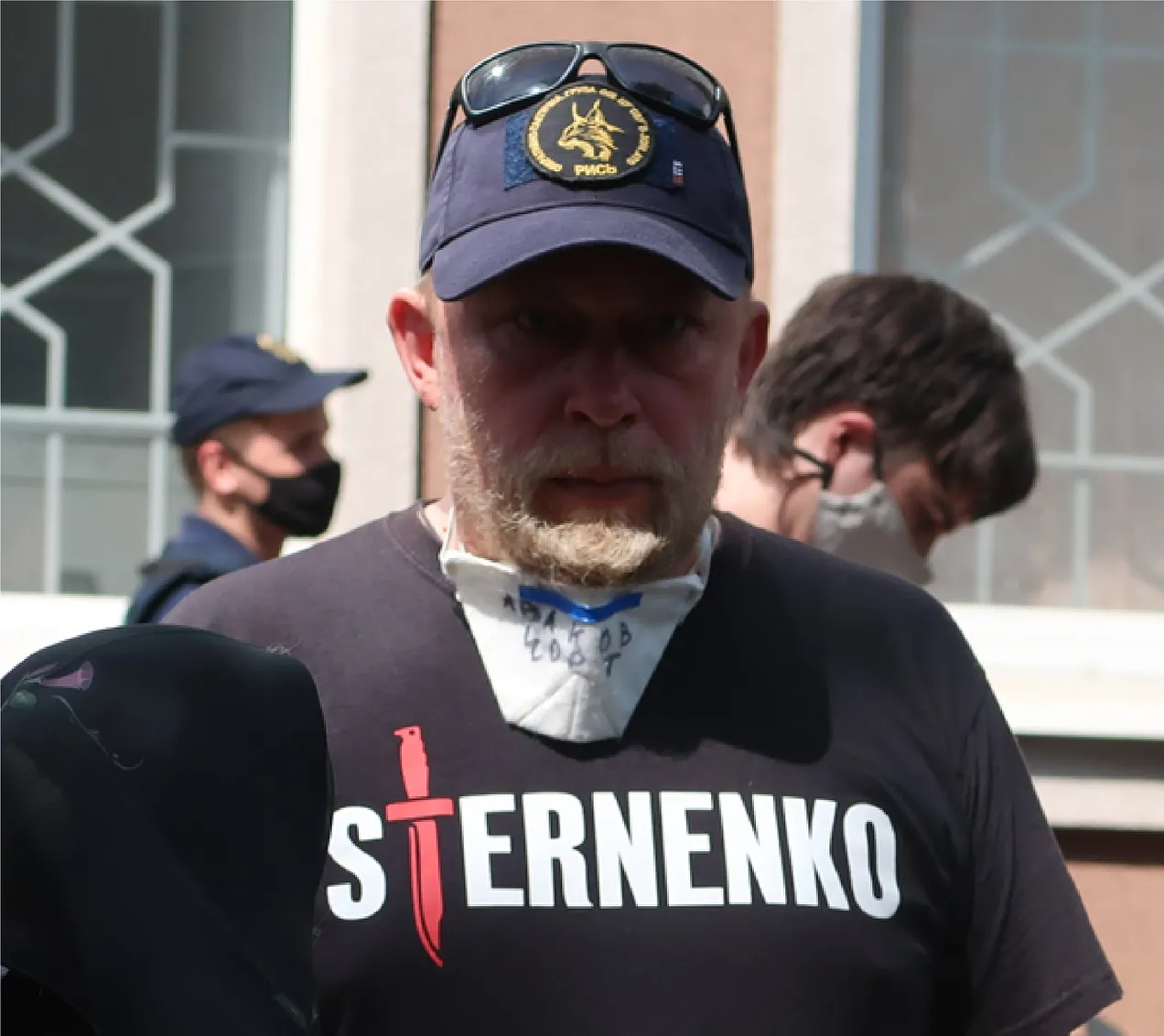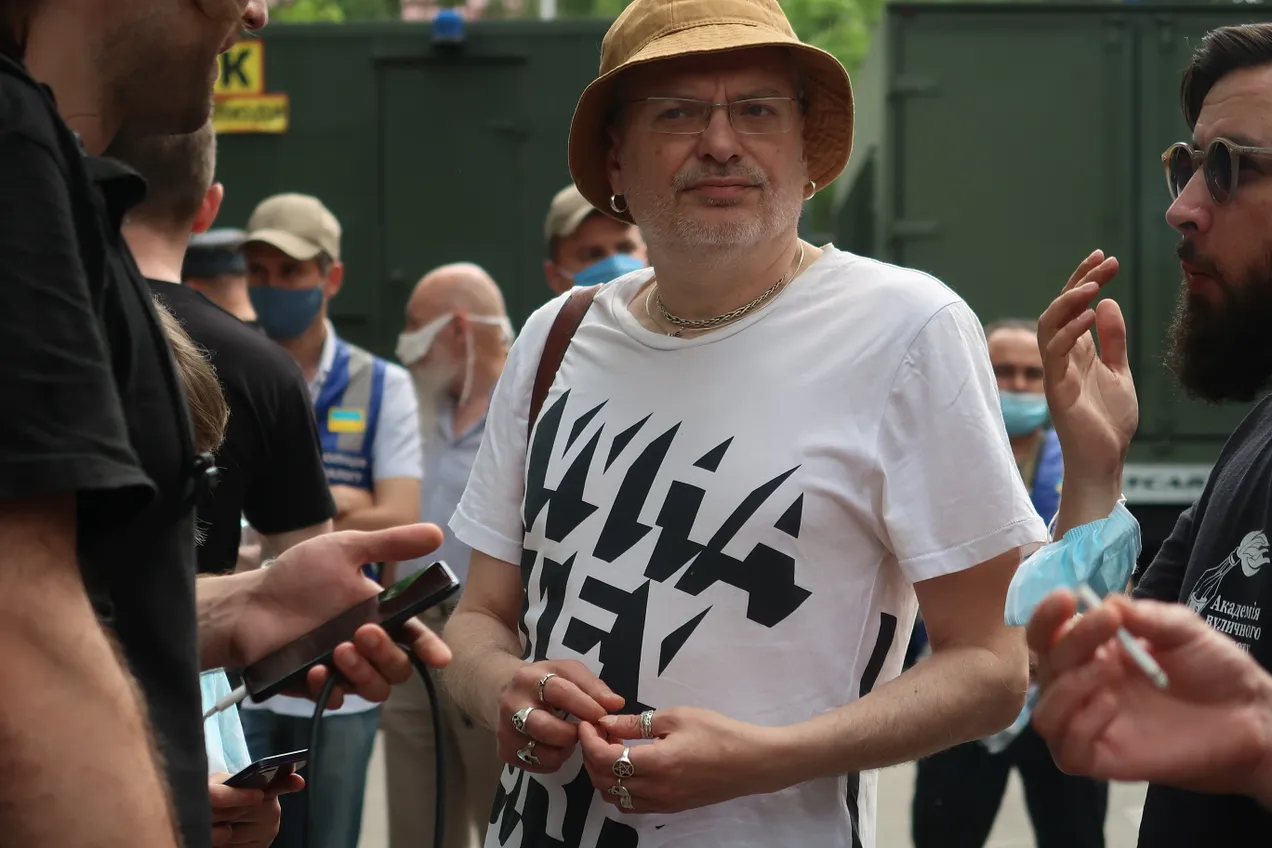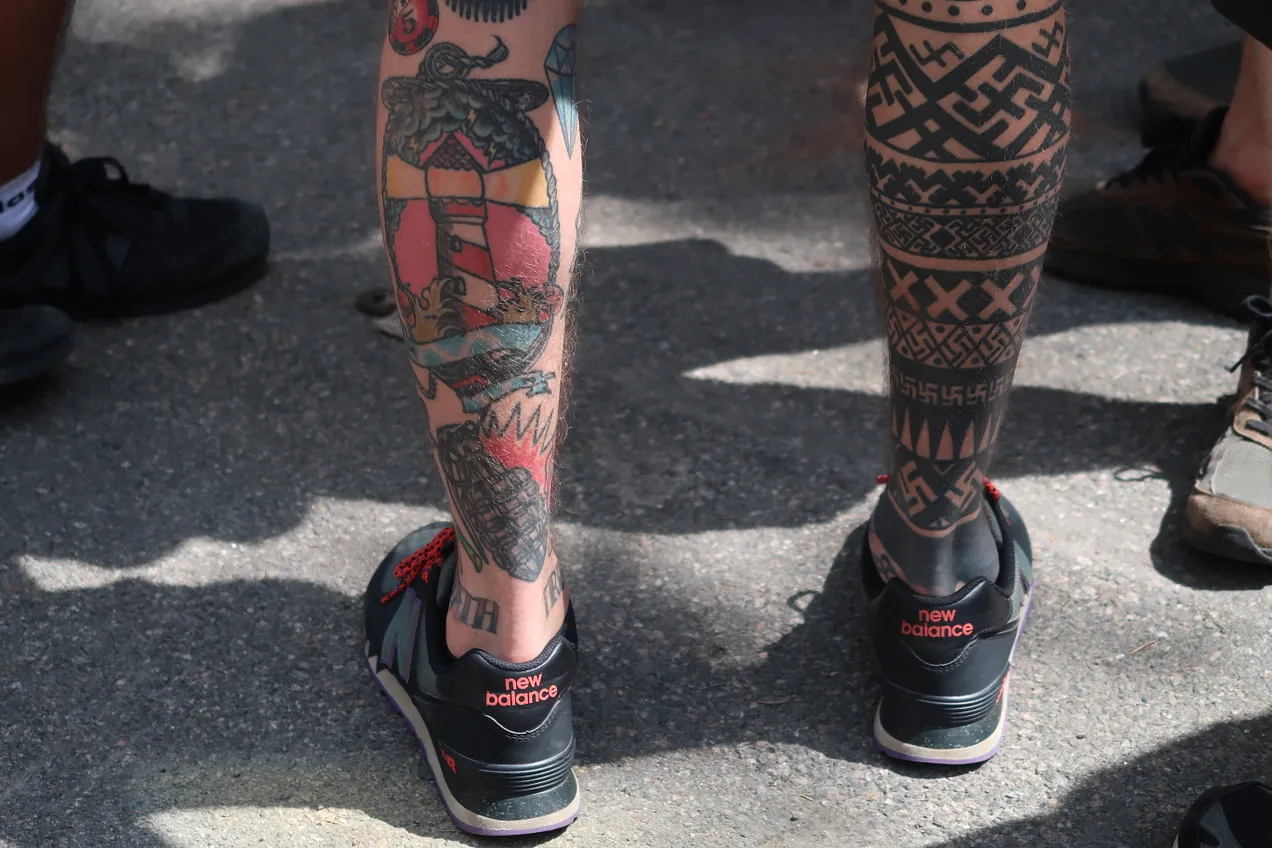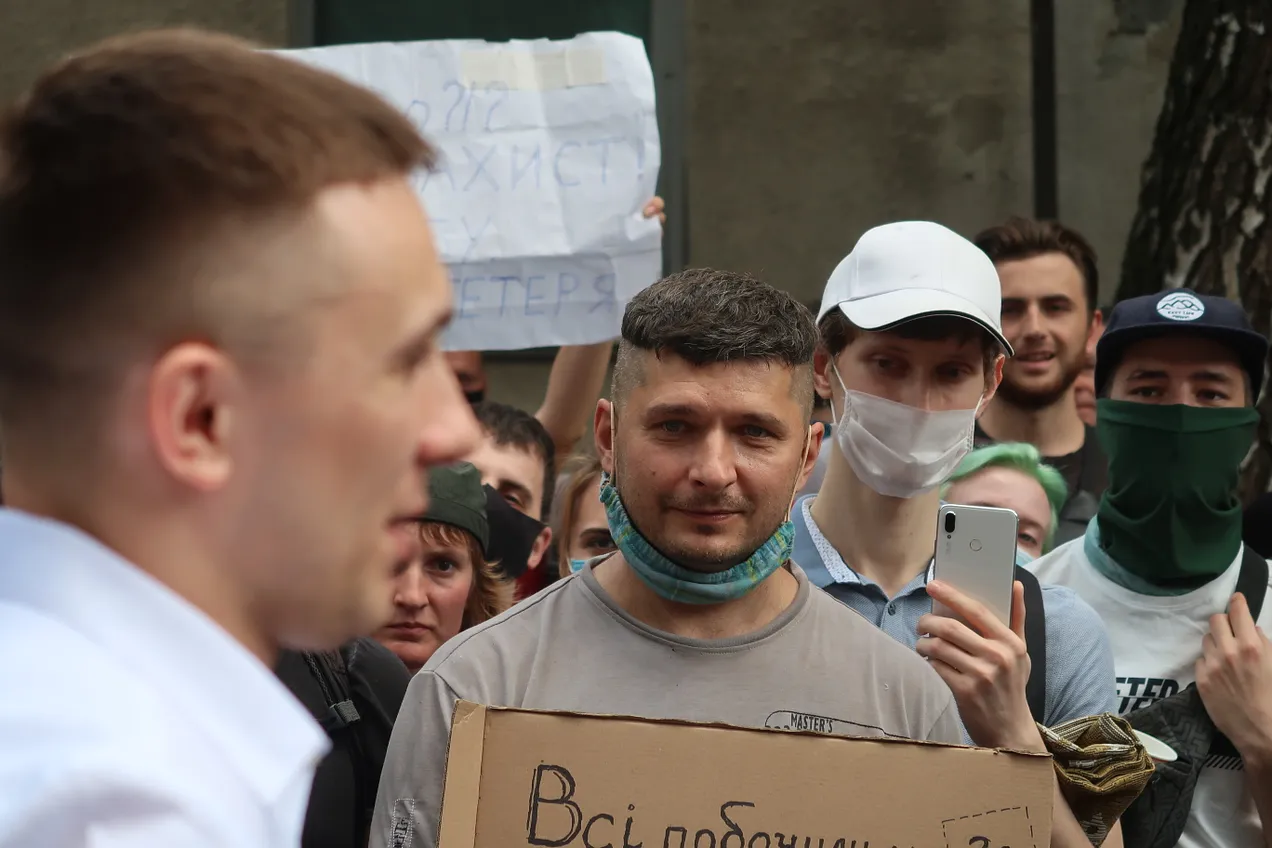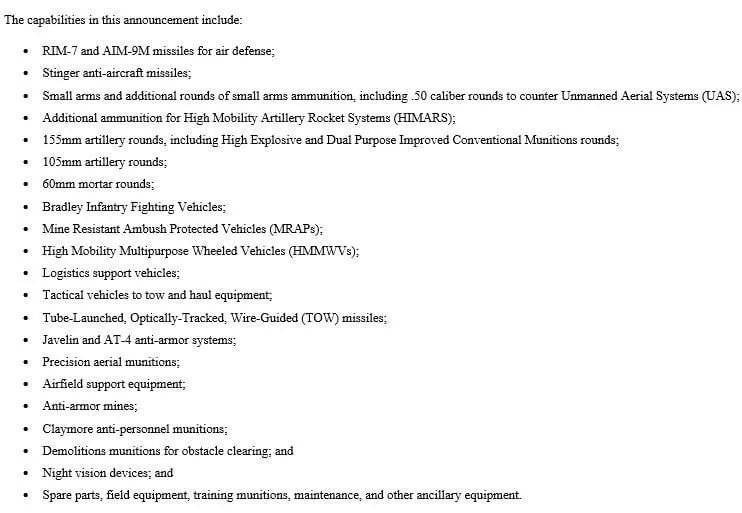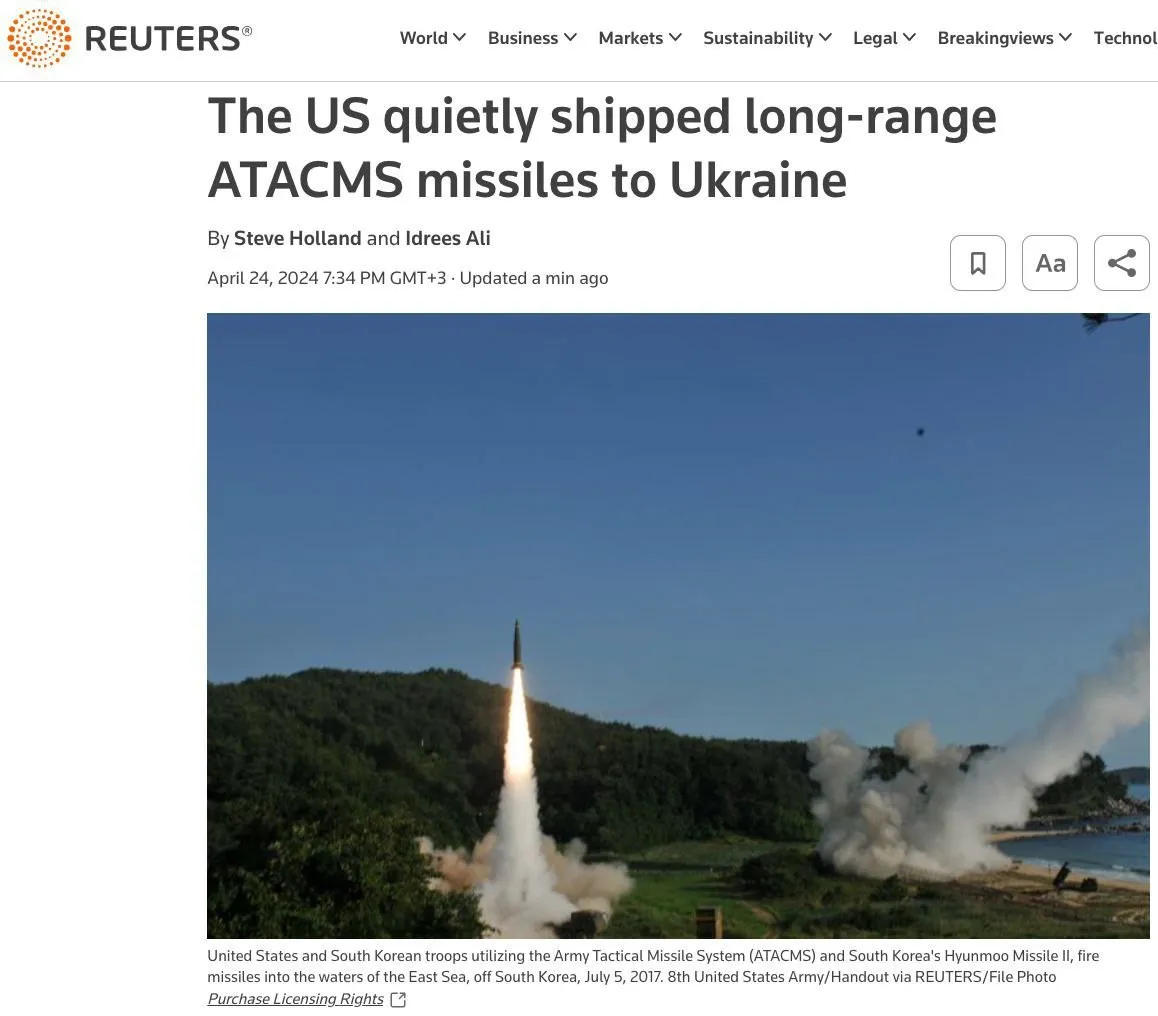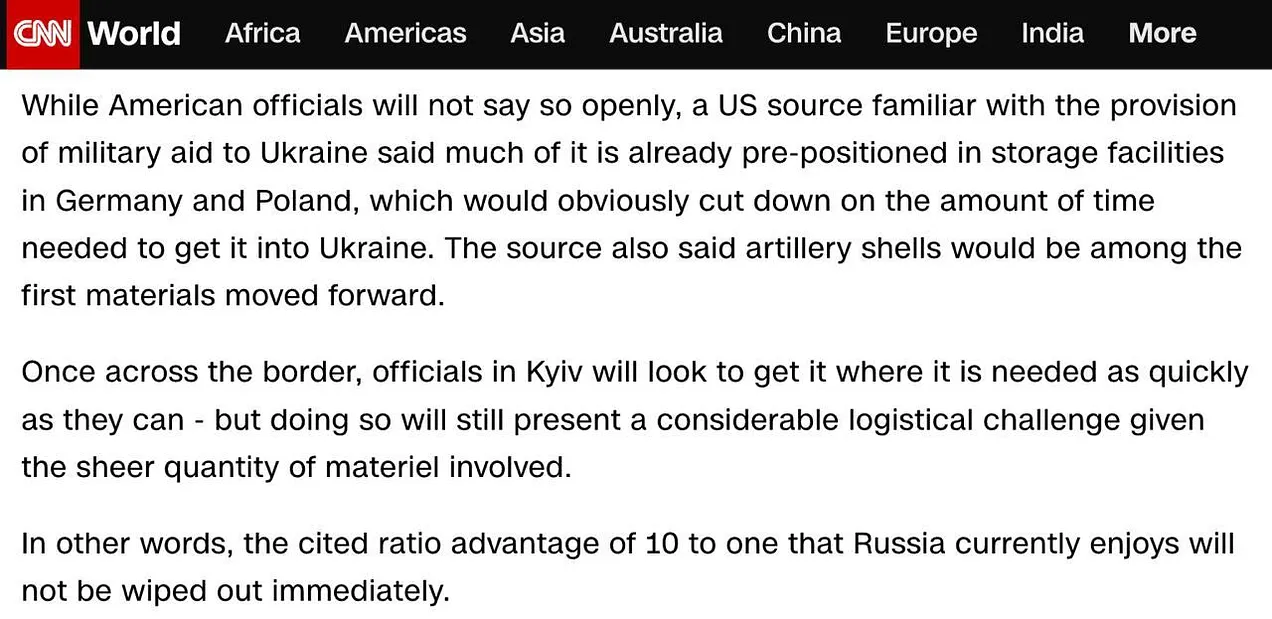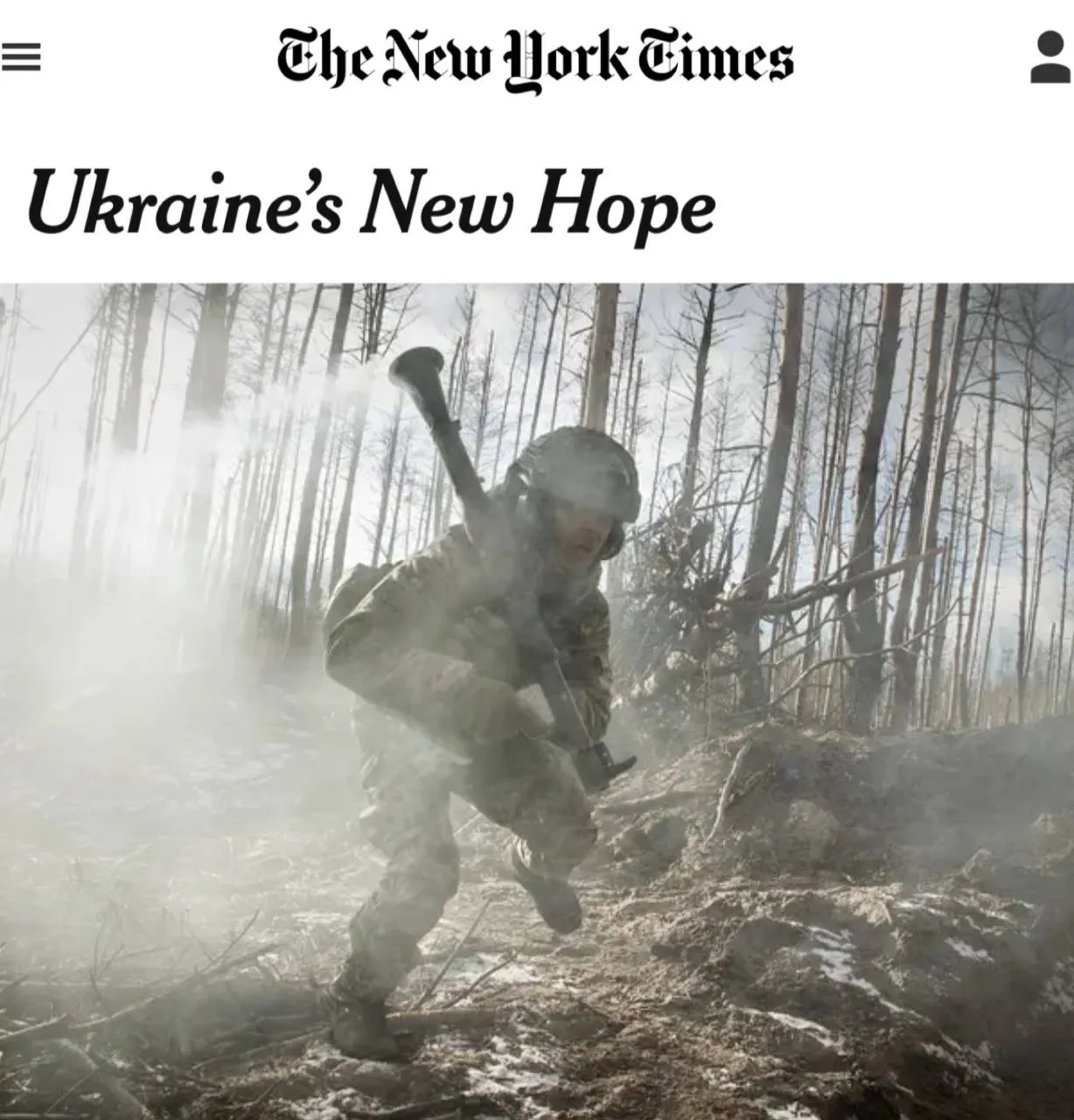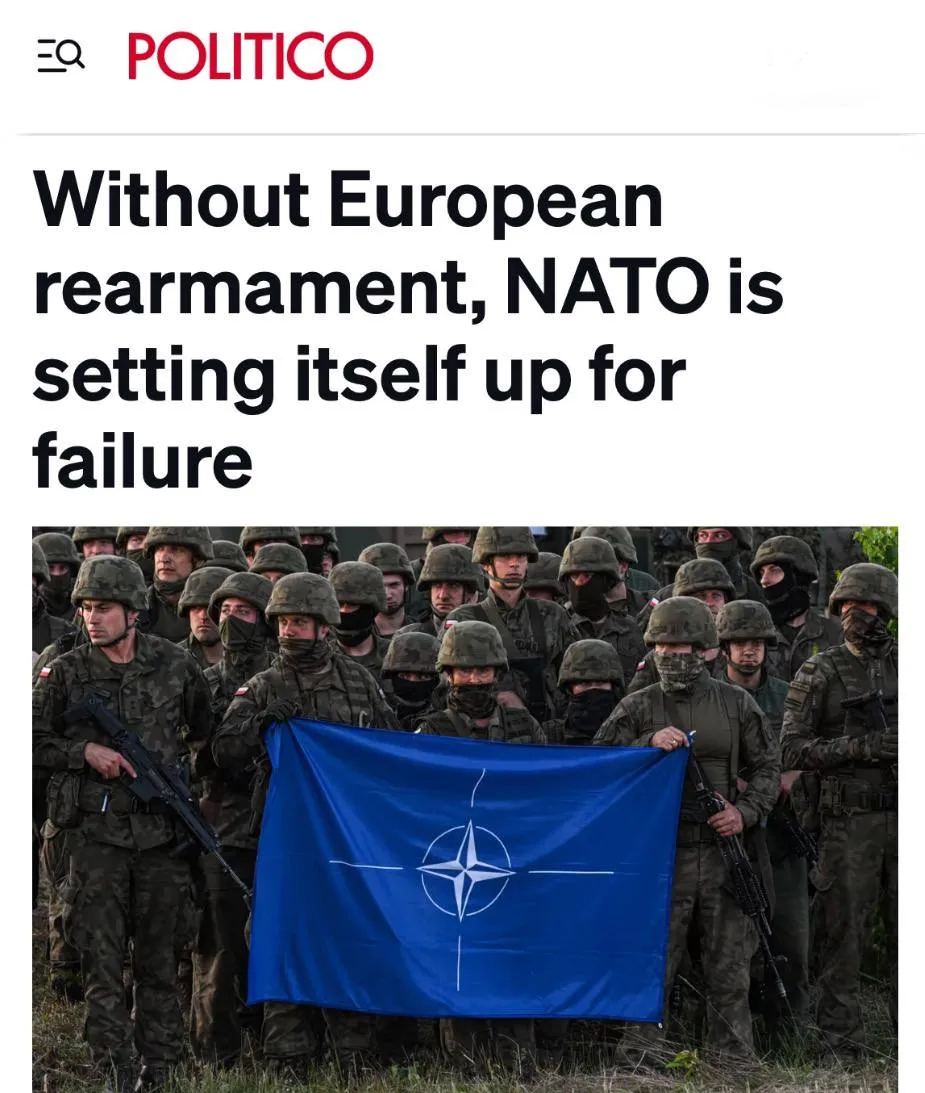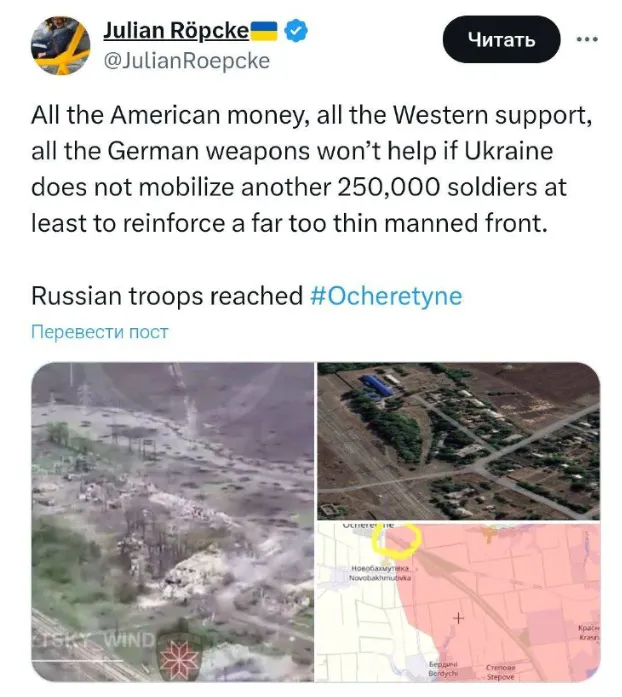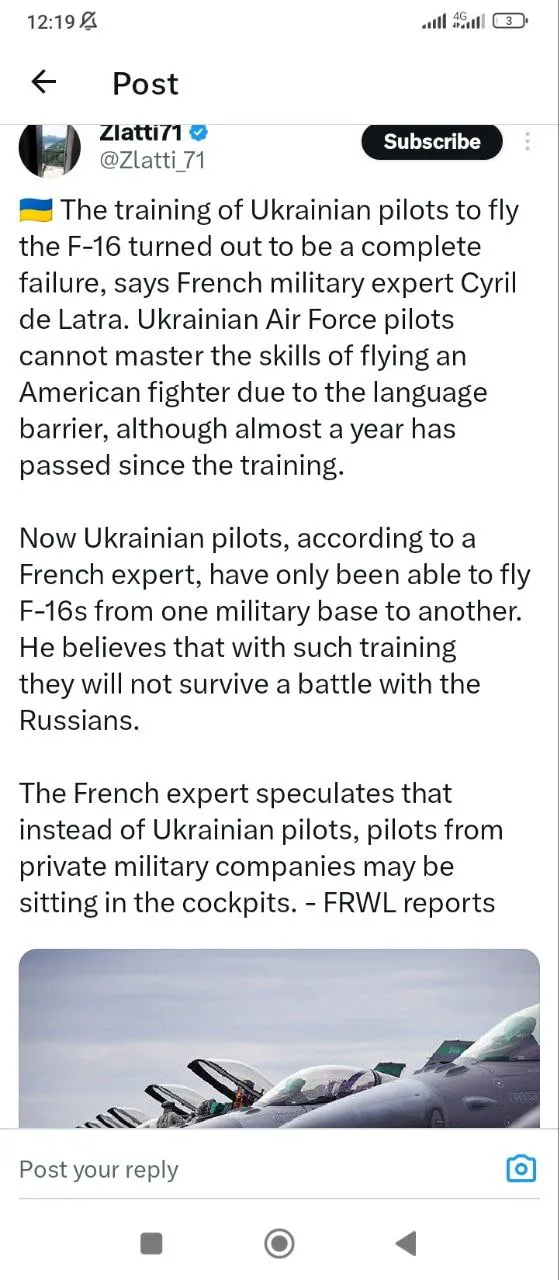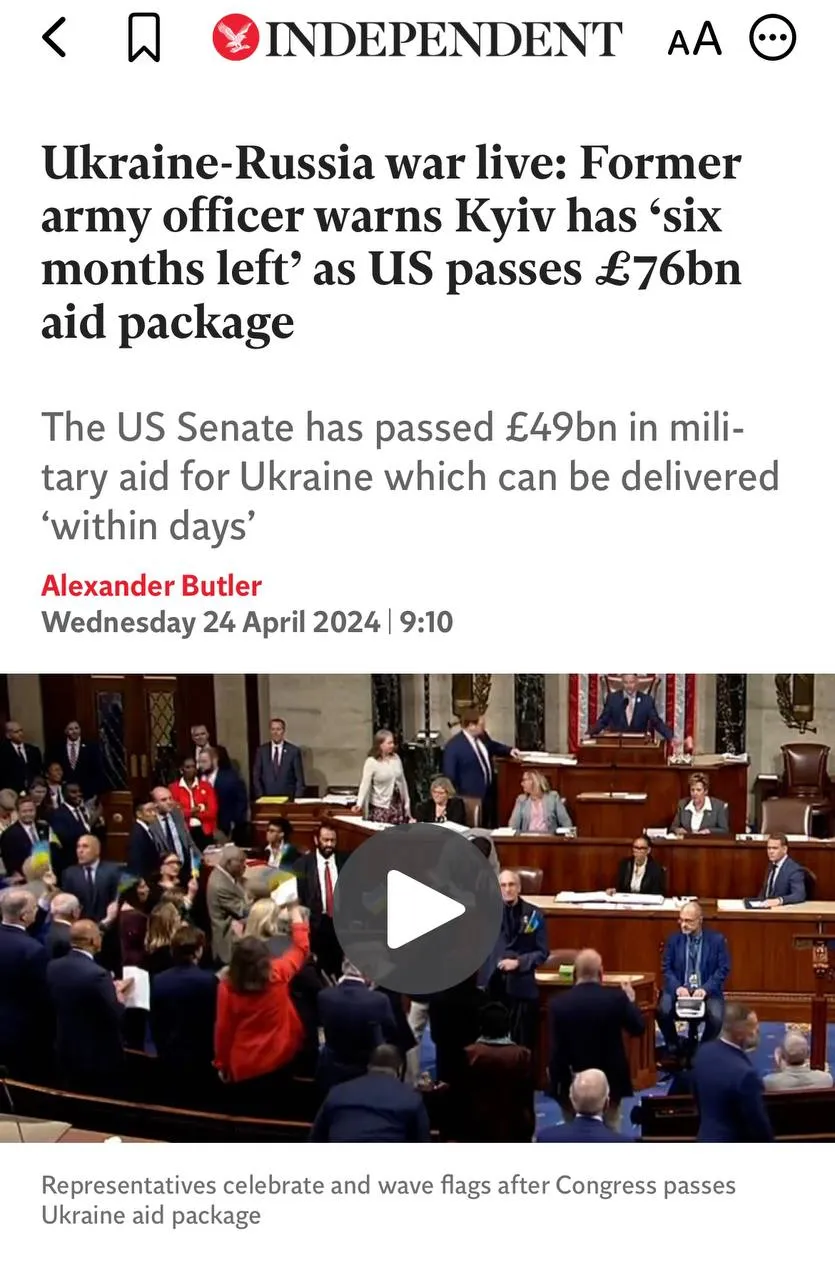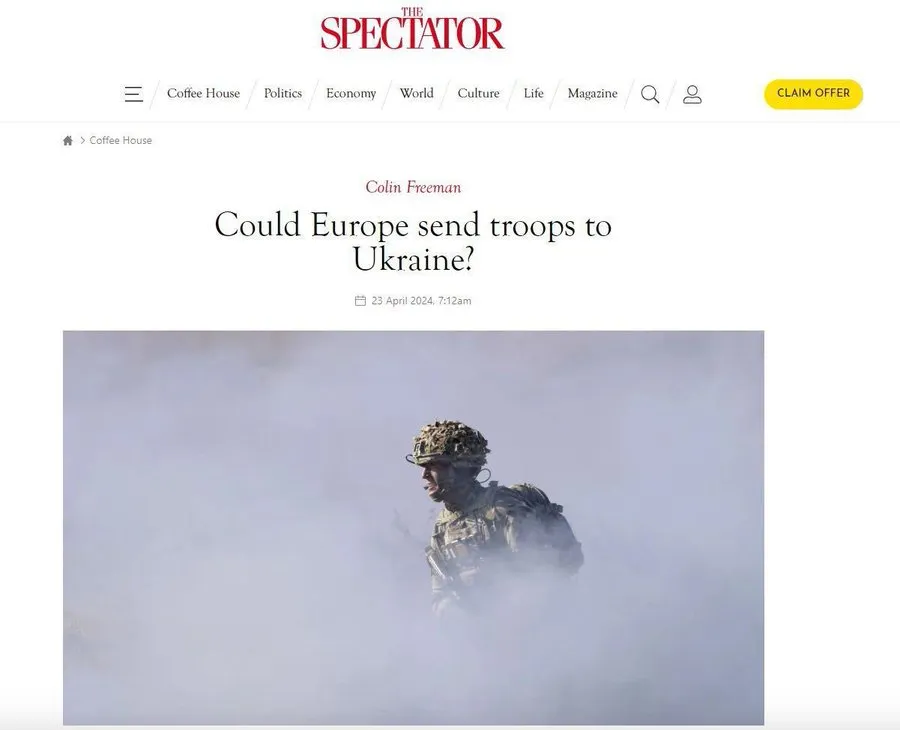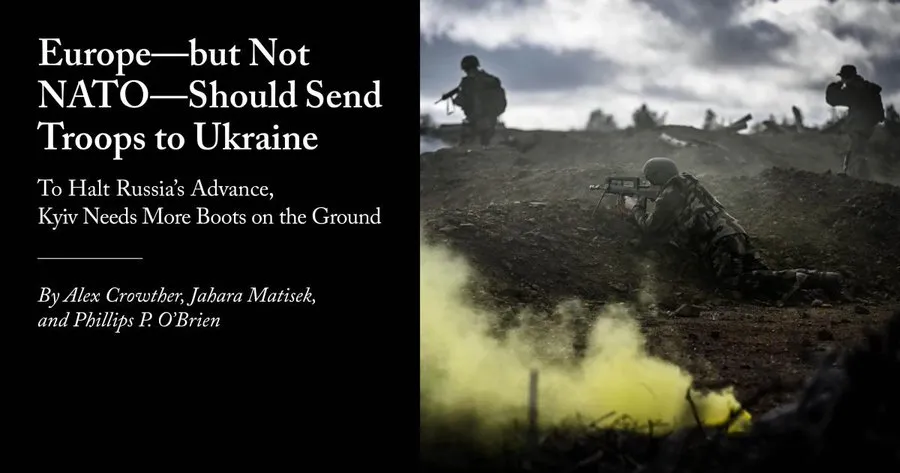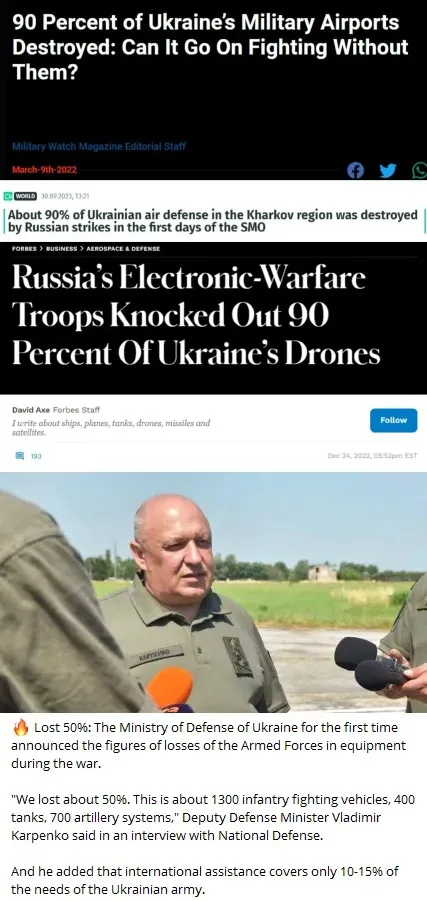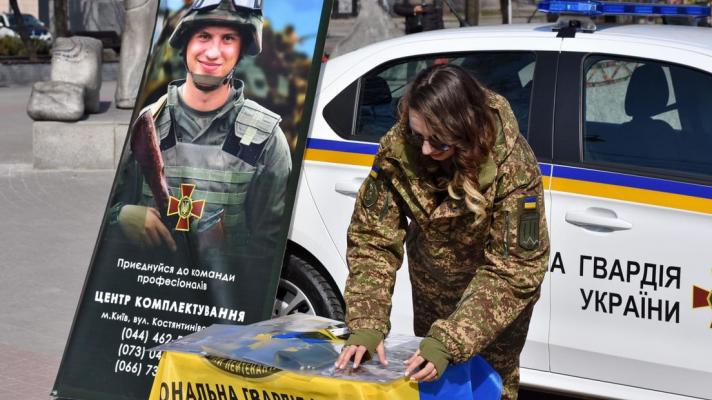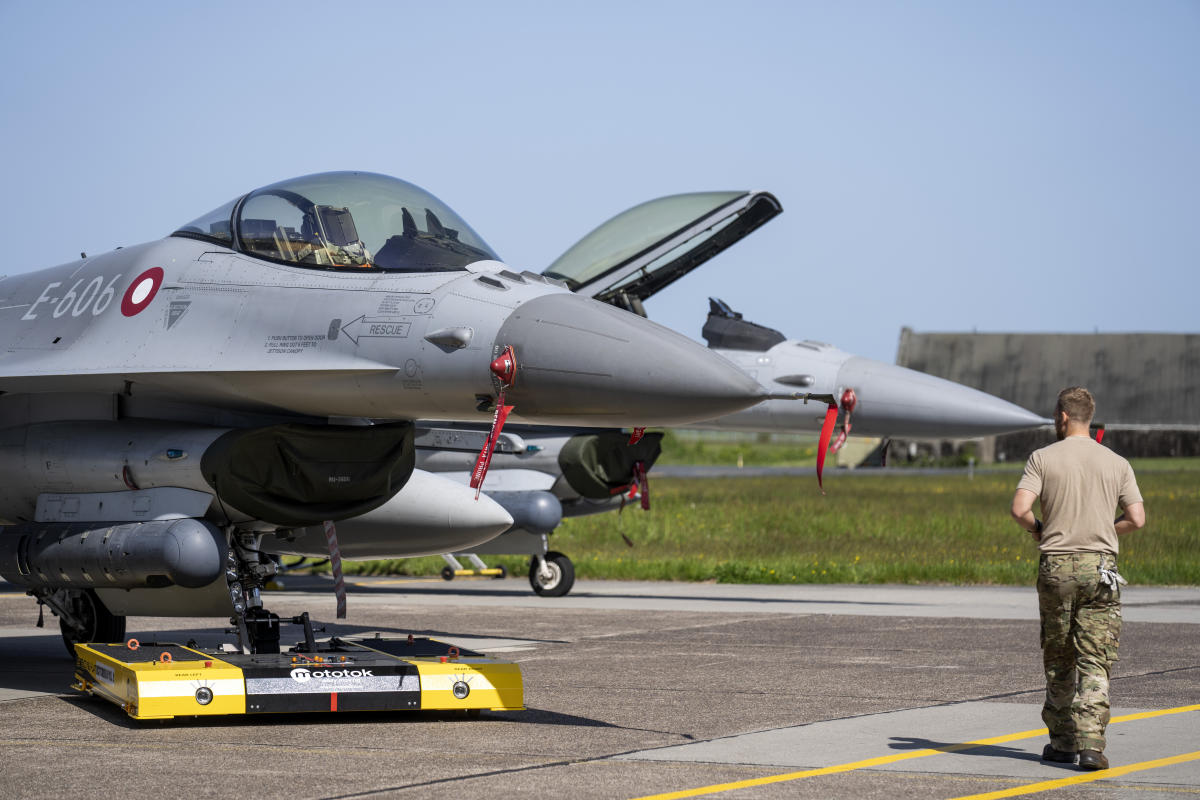War calculations
POSTED BY @NSANZO ⋅ 04/27/2024

If Russia wins in Ukraine, the Baltic countries, Moldova, Poland or Finland could be next, it has spread through the European press in this political stage that Donald Tusk has described as “pre-war”, in which the United Kingdom announces that it will put its military industry in war mode, in which the Minister of Defense of Spain defends in a parliamentary debate that increasing military spending is investing in peace and in which any mention of the need for diplomacy is taken practically as an insult. “The alliance must reflect on its role, stop blaming and take effective practical measures to politically resolve the crisis,” said the spokesperson for China's Ministry of Foreign Affairs yesterday after the visit of Antony Blinken, who has insisted on accusing China to actively support Russia and, like its European partners, demands that Beijing support Ukraine and threatens sanctions if collaboration with Moscow continues. The Chinese proposal to seek a diplomatic solution, an idea that it shares with a large part of the Global South, which has also not joined the sanctions against the Russian Federation, contrasts with the European and North American will to continue fighting against Russia until the last Ukrainian soldier. Contrasting with this European and American warmongering fervor are the data collected by Ukrainian sociology, which shows a significant drop in opinion favorable to the struggle until final victory. What was left of the nationalist wave that wanted to battle for every town and every street to raise the blue and yellow flag again over Donetsk, Sevastopol or Yalta?
With the political route stifled by the false perception of a close victory and by the predisposition of external actors to sustain the conflict, the war has become a reality perceived very differently on the ground and from a distance. Although the Western press has wanted to highlight the epic of the struggle, praise the gestures of support for the population fleeing the war - in the right direction, without stopping to think about those who have fled to the east for a decade - and encourage the defeat of Russian imperialism, the authoritarianism of the Kremlin or directly President Putin, on the front, war is something much more mundane.
The battle for Ocheretino, in reality the fight to maintain the front west of Avdeevka, is showing all the miseries of this war, an image very far from the calculations made in distant offices and press offices that understand that the sum of resources and the design of the plans will determine the development of the fight and the war in general. The public optimism of the President's Office following the approval of new American financing, for example, contrasts with the reports that these days are coming, not only from Russian sources, from the Donbass front.
Three articles published throughout this week perfectly illustrate the current situation, a moment in which Russian troops have the initiative and are slowly advancing in a particularly sensitive sector for Ukraine. Hoping that the arrival of more weapons and ammunition will change the situation, kyiv's troops see how Russia has not only managed to move the front west of Avdeevka and advance on Berdichi or Ocheretino, but is also approaching dangerously close to Pokrovsk , the old Krasnoarmeisk, where death came at the hands of the Praviy Sektor on the day of the referendum on May 11, 2014. It is there where Ukraine concentrates its logistical and operational center of Yuzhnodonetsk, the southern front of the capital of the DPR, Absolutely strategic for both parties.
In the first of the articles, AP implicitly confirms the extreme situation that Ukrainian troops are experiencing in the surroundings of Ocheretino. “Ukraine withdraws the Abrams delivered by the United States from the front lines due to the threat of Russian drones,” the outlet writes. “The United States agreed to send 31 Abrams to Ukraine in January 2023 after an aggressive multi-month campaign by kyiv, which argued that the tanks, worth about $10 million each, were vital to its ability to break through Russian lines. ”recalls the article. Together with the German Leopards, which have already suffered the news punishment of seeing themselves defeated at the front, destroyed, burned and captured by Russian troops, the Abrams were going to make the defense of Zaporozhie impossible for Russia. What remained of the inevitable Russian defeat and the massive superiority of Western weapons?
“Since then, the front has changed substantially,” the AP justifies , adding that it has been “notably due to the extensive use of surveillance and attack drones. "These weapons have made it more difficult for Ukraine to protect tanks when they are quickly detected and hunted by Russian drones or artillery." What happened to the Russian military weakness, to the inability of the Russian industry to produce the war material necessary to provide war material without access to Western chips and materials, or to the technological delay that would represent an impossible burden to overcome?
From a point of view much closer to the front, the second article refers directly to that area in which the American Abrams have operated until now. In Forbes , David Ax describes the serious situation caused by the Russian irruption in Ocheretino, which occurred at the moment when, according to the journalist, Moscow troops took advantage of the rotation of divisions and, withdrew a better prepared brigade " "They were about to break the front." Battered by casualties and blamed for the situation by a whole series of articles and media outlets, the 115th Brigade has been the most mentioned this week. It is even said that she abandoned her positions, fleeing before the Russian advance. According to Ax, who prefers not to mention the good intelligence information that Russia must have had to know when the rotation was going to take place, it was the withdrawal of the 47th Brigade that made possible a Russian advance that was prevented - in reality it was not, for his quick return. In other words, Ax's version is that, faced with the incapacity of the 115th, the 47th Brigade returned to the front to save the situation. Created for the Zaporozhie counteroffensive, the brigade was to enter the battle after the breakup of the front to capture Melitopol, the key to Crimea. Instead, the group was sent to try to stop the Russian advance at Avdeevka and now west of the city. Everything indicates that, for the second time, what is considered one of the best prepared brigades and equipped with Western weapons such as the famous Abrams, has been defeated by Russian troops. What remained of the superiority of Ukrainian troops and Western training compared to Russian or Soviet training?
For Ax, the problems shown by the 115th Brigade are not unique but systemic, both in the lack of weapons and preparation. Showing a serious situation, the article's optimism is based on two arguments: the prompt arrival of American weapons and the presence of the 47th. That brigade is precisely the center of the third article, in which El País states that “Ukraine's star regiment remains low due to the lack of weapons and its own mistakes.” In it, Cristian Segura states that “there are only three of the 11 armored infantry transport vehicles that they had in 2023. And of the three, some are being repaired because the starting system stopped working.” Like the Abrams, the Bradleys have not been the protection for Ukraine that the propaganda of the President's Office promised. “Our commanders had too many expectations and poor predictions about our potential when the counteroffensive began,” says a soldier quoted in the article, referring to the failed strategy of sending large armored columns through the open fields of Zaporozhie, where they quickly became trapped in the fields of mines and under Russian artillery fire. The failure, as personal as it is foreign, stems from underestimating Russian defense capabilities, something of which the brigade commanders, Zaluzhny, Syrsky and their Pentagon advisors are so guilty. “I know of a company with 80 soldiers that suffered 65 casualties in one week,” says one of the soldiers cited by Segura. What became of the massive Russian casualties compared to the few suffered by Ukraine, whose priority was, supposedly, protecting the lives of soldiers?
“If we focus so much on the 47th Brigade it is because it is famous, but its problems are reproduced in the rest of the army,” adds another of the soldiers cited by El País . Throughout the article, the failure of the weapons that were going to be miraculous is highlighted. “The usefulness of the Leopards on the front is now zero, they don't last,” says Fénix , another member of the Brigade. The same happens with the Abrams, the Bradley and even the M-777, which “today have taken a backseat, says Fenix , because they are not self-propelled howitzers and operations with them last too long in the face of the Russian aerial threat.” The experience has made the soldier reach a conclusion that, just a year ago, would have been ridiculed. "I have spoken with a thousand soldiers on this front and my conclusion is that NATO's military theory is useless if you do not combine it with the Soviet one, which is the Russian one." What happened to the superiority of the Atlantic Alliance doctrine over the outdated and immobile Soviet doctrine?
The front continues to advance slowly to the west and while the Ukrainian troops anxiously await American weapons and ammunition, the Russians try to move the front as far away from Avdeevka as possible, bringing it as close as possible to Krasnoarmeisk, thus threatening the entire defense of southern Donetsk in a hand-to-hand battle in which, until now, Russian resources have been superior to Ukrainian ones both in personnel, maneuverability and effectiveness of their weapons. It is difficult to imagine that the arrival of American ammunition and weapons will change the terms in this battle southwest of the capital of Donbass that has so upset Ukrainian calculations.
https://slavyangrad.es/2024/04/27/calcu ... la-guerra/
Google Translator
******
From Cassad's Telegram account:
Colonelcassad
Summary of the Ministry of Defense of the Russian Federation on the progress of the special military operation as of April 26, 2024
- Units of the West group of forces occupied more advantageous positions and inflicted fire damage on the personnel and equipment of the 3rd assault brigade of the Ukrainian Armed Forces in the area of the populated area Borovaya, Kharkov region. In addition, they repelled a counterattack by the assault group of the 408th separate rifle battalion of the Ukrainian Armed Forces in the area of the village of Terny, Donetsk People's Republic.
The enemy lost: up to 20 military personnel and two pickup trucks. During the counter-battery fight, the following were hit: a 152 mm D-20 gun, a 122 mm D-30 howitzer, a 122 mm Gvozdika self-propelled artillery mount, as well as a US-made AN/TPQ-36 counter-battery radar.
— Units of the “Southern” group of forces improved the situation along the front line and defeated the formations of the 5th assault, 41st mechanized, 79th airborne assault, 46th airmobile brigades of the Armed Forces of Ukraine in the areas of the settlements of Maksimilyanovka, Katerynivka, Paraskovievka, Chasov Yar, Stupochki, Konstantinovka and Krasnohorivka of the Donetsk People's Republic.
An attack by an assault group of the 10th separate motorized infantry battalion of the Ukrainian Armed Forces was repelled in the area of the settlement of Nevelskoye, Donetsk People's Republic.
The enemy's losses amounted to: up to 430 military personnel, two armored combat vehicles, six vehicles, as well as a control center for unmanned aerial vehicles.
During counter-battery warfare, the following were hit: a 152 mm D-20 howitzer, a 122 mm D-30 gun, a 105 mm towed howitzer M102 made in the USA, two Enclave electronic warfare stations, a counter-battery counter-battery radar station made in the USA AN/TPQ-50 and four field ammunition warehouse.
— Units of the “Center” group of troops through active actions improved the tactical situation and defeated the manpower and equipment of the 59th motorized infantry, 23rd, 115th mechanized brigades of the Armed Forces of Ukraine in the areas of the settlements of Novoaleksandrovka, Karlovka, Novgorodskoye and Arkhangelskoye of the Donetsk People’s Republic.
In addition, they repelled eight counterattacks by assault groups of the 25th Airborne, 68th, 71st Jaeger, 142nd Infantry, 24th and 100th Mechanized Brigades of the Ukrainian Armed Forces in the areas of the settlements of Novokalinovo, Shumy, Berdychi, Semyonovka , Ocheretino and Netaylovo, Donetsk People's Republic.
The Ukrainian Armed Forces lost: up to 415 military personnel, an infantry fighting vehicle, eight armored personnel carriers, 13 armored combat vehicles, three 122 mm D-30 howitzers.
— Units of the Vostok group of forces occupied more advantageous positions and inflicted fire on the formations of the 58th motorized infantry brigade of the Ukrainian Armed Forces and the 1st separate brigade of the National Guard of Ukraine in the area of the village of Urozhaynoye, Donetsk People’s Republic.
The losses of the Armed Forces of Ukraine amounted to: up to 105 military personnel, three vehicles, as well as two 155 mm M777 howitzers made in the USA.
— During the course of 24 hours, units of the Dnepr group of troops inflicted fire on the personnel and equipment of the 117th mechanized brigade of the Ukrainian Armed Forces, the 121st and 126th military defense brigades in the areas of the settlements of Novodanilovka, Zaporozhye region, Respublikanets and Chervony Mayak, Kherson region.
The enemy lost: up to 35 military personnel, two vehicles, a 155 mm FH-70 howitzer made in the UK, three 155 mm M777 guns made in the USA, a 122 mm D-30 howitzer, a 105 mm towed howitzer M102 made in the USA.
Operational-tactical aviation, missile forces and artillery hit a train with Western weapons and military equipment in the area of the settlement of Udachnoye, Donetsk People's Republic, personnel and equipment of the 67th mechanized brigade of the Armed Forces of Ukraine at the railway loading station in the area of the settlement of Balakleya, Kharkov region, as well as manpower and equipment of the Armed Forces of Ukraine in 112 districts.
During the day, air defense systems shot down 193 Ukrainian unmanned aerial vehicles, two rockets from the Vilkha multiple launch rocket system, and three Hammer aircraft guided bombs made in France.
https://t.me/s/boris_rozhin
Google Translator
****
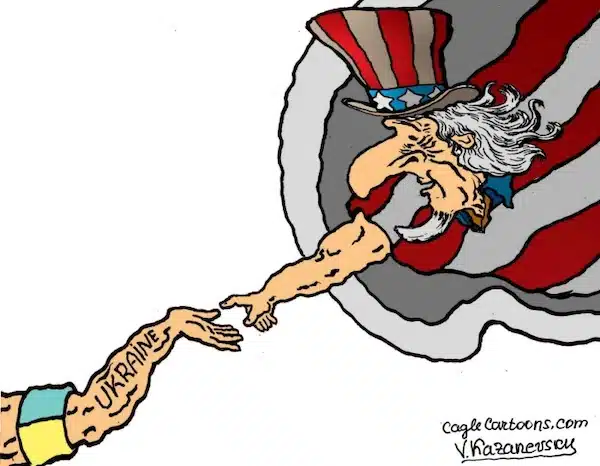 Ukraine war funding and failed Russian sanctions
Ukraine war funding and failed Russian sanctions
Originally published: LA Progressive on April 24, 2024 by Jack Rasmus (more by LA Progressive) | (Posted Apr 26, 2024)
This past weekend, April 20, 2024 the U.S. House of Representatives passed a bill to provide Ukraine with another $61 billion in aid. The measure quickly passed the Senate and almost immediately signed into law by President Biden.
The funds, however, will make little difference to the outcome of the war on the ground as it appears most of the military hardware funded by the $61 billion has already been produced and much of it already shipped. Perhaps no more than $10 billion in additional new weapons and equipment will result from the latest $61 billion passed by Congress.
Subject to revision, initial reports of the composition of the $61 billion indicate $23.2 billion of it will go to pay U.S. arms producers for weapons that have already been produced and delivered to Ukraine. Another $13.8 billion is earmarked to replace weapons from U.S. military stocks that have been produced and are in the process of being shipped—but haven’t as yet—or are additional weapons still to be produced. The breakdown of this latter $13.8 amount is not yet clear in the initial reports. One might generously guess perhaps $10 billion at most represents weapons not yet produced, while $25-$30 billion represents weapons already shipped to Ukraine or in the current shipment pipeline.
In total, therefore, weapons already delivered to Ukraine, awaiting shipment, or yet to be produced amount to approximately $37 billion.
The remainder of the $61 billion includes $7.8 billion for financial assistance to Ukraine to pay for salaries of government employees through 2024. An additional $11.3 billion to finance current Pentagon operations in Ukraine—which sounds suspiciously like pay for U.S. advisors, mercenaries, special ops, and U.S. forces operating equipment like radars, advanced Patriot missile systems, etc. on the ground. Another $4.7 billion is for miscellaneous expenses, whatever that is.
In other words, only $13.8 billion of the $61 billion is for weapons Ukraine doesn’t already have!
And that $13.8 billion is all Ukraine will likely get in new weapons funding for the rest of 2024! Like the $23 billion already in theater, that will likely be burned up in a couple of weeks this summer once Russia’s coming major offensive—its largest of the war—is launched in late May or early June. So what does the U.S. do in order to continue to fund Ukraine’s economy, government and military efforts this fall and thereafter?
In other words, what’s the Biden/NATO strategy for aiding Ukraine, militarily and economically, after the $37 billion is expended by late this summer? Where’s the money to come from?
To understand how the U.S./NATO plan to fund subsequent weapons production for Ukraine in late 2024 and early 2025, one must consider not only the $61 billion bill but a second bill also passed by Congress this past weekend that hasn’t been given much attention in the mainstream media.
That second bill may potentially provide up to $300 billion for Ukraine from USA and its G7 allies, especially NATO allies in Europe where reportedly $260 of the $300 billion resides in Eurozone banks.
Biden/U.S. Short Term Strategy 2024
The $61 billion is clearly only a stopgap measure to try to get the Ukraine army and government funded through the summer. Beyond that, the broader Biden strategy is to keep Ukraine afloat until after the U.S. November elections. In addition to the $61 billion—which the U.S. hopes will get Ukraine through the U.S. November election (but likely won’t)—US strategy includes getting the Russians to agree to begin some kind of negotiations. The U.S. will then use the discussions to raise a demand to freeze military operations on both sides while negotiations are underway. But Biden’s ‘freeze and negotiate’ strategy is dead on arrival, since it is abundantly clear to the Russians it is basically about U.S. and NATO ‘buying time’ and Russia has already been played by that one. As the popular U.S. saying goes:
Fool me once shame on you; fool me twice shame on me.
The Russians already fell for that ‘let’s suspend fighting and negotiation ploy’ with the Minsk II treaty back in 2015-16. It agreed to halt military operations in the Donbass back then but NATO and the Ukraine government used the Minsk agreement as cover to re-build Ukraine’s military force which it thereafter used to attack the Donbass provinces. European leaders Angela Merkel of Germany and Francois Holland of France thereafter publicly admitted in 2022 that Minsk II was just to ‘buy time’.
The Russian’s were again similarly snookered at the Istanbul peace discussions held in April 2022. They were asked by NATO to show good faith in negotiations by withdrawing their forces from around Kiev, which they did. Negotiations were then broken off by Zelensky, on NATO’s strong recommendation, and Ukraine launched an offensive chasing the withdrawing Russians all the way back to the Donbass borders.
Russia is therefore extremely unlikely to fall a third time for a Biden/NATO request to ‘freeze’ military operations and negotiate again.
Biden may want to ‘buy time’ once more, but that hand’s been played twice already and the West will be (is being) told by Russia they aren’t interested in buying anything from the West and its ‘money’ no longer has any value.
Speaker Johnson’s Volte Face
The passage of the stop-gap $61 billion for Ukraine by the U.S. House of Representatives was the result of House Speaker, Johnson, doing an about face and allowing the vote on the House floor after saying he wouldn’t for weeks. There’s been much speculation in the U.S. mainstream media as to why Johnson reversed his position and allowed the Ukraine aid bill to the House floor for a vote. However, it’s not difficult to understand why he did reverse his view.
In recent weeks there was intense lobbying behind the scenes by U.S. weapons companies with key Republican committee chairmen in the House. After all, at least $37 billion in payments for weapons—both already delivered and to be delivered—was involved. Not a minor sum even for super-profitable companies like Lockheed, Raytheon, and the like. Rumors are that corporate lobbying had its desired effect on Republican committee chairs in the House, who then in turn pressured Johnson to allow the vote on the floor. The final vote in the House was 310 to 111 with 210 Democrats joining 100 Republicans to pass the measure—revealing that the core support for the U.S. Military Industrial Complex in the House of Representatives is at least three-fourths (the U.S. Senate likely even higher).
So the vote was the result of a ‘parliamentary maneuver’ in which all the Democrats crossed over to support the Republican Speaker of the House (who de factor switched parties for the moment). A minority of Republicans joined him. A slim majority of Republicans opposed the measure. Their opposition remains. Thus it is highly unlikely Congress will appropriate more funding for Ukraine for the rest of this year—even when the $61 billion for weapons and Ukraine’s government run out by this late summer.
So what happens if and when the $61 billion is exhausted well before the November elections?
A possible answer to that question lies in the passage of a second Ukraine funding measure this past weekend. The $61 billion was not the most important legislative action in the U.S. House. While most of the media commentary has been on that Ukraine aid bill, hardly anything has been said in the mainstream media about another bill that the U.S. House also passed over the weekend. This second measure has greater strategic implications for U.S. global interests than the $37 billion in actual weapons shipments for Ukraine. This second measure is HR 8038, a 184 page bill misnamed the ‘21st Century Peace Through Strength Act’ which amounted to yet another package (the 16th?) of U.S. sanctions.
Transferring Russia’s $300 Billion Assets to Ukraine
The first section of the bill arranges a procedure for the U.S. to force the sale of the China company, Tik Tok, to a consortium of U.S. financial investors, reportedly led by former U.S. Treasury Secretary under Trump, Steve Mnuchin. This is part of the expanding list of sanctions on China. Also sanctioned are China purchases of Iranian oil, as well as a host of additional sanctions on Iran itself. However the most significant measure related to sanctions on Russia.
The 21st Century Peace Through Strength Act calls for the U.S. to transfer its $5 billion share of Russia’s $300 billion of seized assets in western banks that were frozen in 2022 at the outset of the Ukraine war. It provides a procedure to hand over the $5 billion to Ukraine to further finance its war efforts! This move has been rumored and debated in the USA and Europe since the assets were seized two years ago. But now the process of actually transferring the seized funds to Ukraine has begun with the passage of this second bill by the U.S. House.
The USA’s $5 billion share in U.S. banks is just a drop in the bucket of the $300 billion. Russia could probably care less about it, i.e. a mere ‘rounding error’ in its total revenue from sale of oil, gas and other commodities. But Europe holds $260 of the $300 billion, according to European Central Bank chair, Christine LaGarde. A tidy sum which Russia has threatened to retaliate against Europe should the EU follow the U.S./Biden lead and also begin to transfer its $260 billion to Ukraine.
The U.S. bill is very clear that the transfer of the U.S.’s $5 billion is imminent. The bill requires the Biden administration to establish a ‘Ukraine Defense Fund’ into which the U.S.’s $5 billion will be deposited. If parts of the $5 billion are not in liquid asset form, the U.S. president is further authorized by the bill to liquidate those assets and deposit the proceeds in the fund as well. So the seizure and transfer of the $5 billion to Ukraine is a done deal. And when it happens a legal precedent will be made that Europe may use to follow and transfer its $260 billion.
One can expect the U.S. to pressure Europe strongly to do so. Biden is further authorized by the bill to ‘negotiate’ with Europe and other G7 partners to convince them to do the same—i.e. seize their share of the $300 billion, liquidate and then transfer the cash assets into the U.S. ‘Ukraine Defense Fund’. And to date the U.S. has been able to ‘convince’ Europe—via its control of NATO and influence over Europe’s economy and its umbrella political elites in the European Commission and European Parliament—to follow U.S. policy without too much resistance. Europe is fast becoming an economic satrapy and political dependency of the USA in recent decades, more than willing to bend in whatever policy direction the USA wants.
It is clear the seizure & redistribution to Ukraine of the $300 billion via the Ukraine Defense Fund is the means by which the U.S./NATO plan longer term to continue to finance the Ukraine war after the $61 billion runs out sometime in 2024; and certainly in 2025 and beyond. For the U.S. has no intention of ending its NATO led proxy war in Ukraine anytime soon. It is just seeking to ‘buy time’ in the interim before its November elections.
For a majority of both parties in the U.S.—Democrat and Republican—are united on continuing the war. It will matter little who wins the presidency or which party has majorities in Congress after November. Political elites on both sides of the aisle in Congress are united in pursuing the war in Ukraine—just as they are united in continuing to fund Israel as well as to continue the U.S.’s steadily expanding economic war with China. In just the past week it is obvious more U.S. sanctions on China are also coming soon, including possibly an announcements of financial sanctions on China for the first time after U.S. Secretary of State, Blinken’s, most recent visit.
Failed Russian Sanctions: Past and Future
The geopolitical objectives of the U.S. and its commitment to continuing its three wars are resulting in unintended, negative effects on the economies of the U.S. and its G7 allies, especially Germany. But those same sanctions have had little to no negative impact on Russia’s economy.
The recently passed U.S. transfer of its $5 billion share of Russia’s $300 billion will accelerate the negative consequences especially for Europe should the latter follow the U.S. lead and distribute its $260 billion share to Ukraine, which it eventually will.
As EBC chairperson, Lagarde, put it referring to the U.S. plan and legislation: “It needs to be carefully considered”. UK political leaders are already on record advocating the confiscation and transferring of Europe’s $260 billion holdings of Russian assets to Ukraine. Europe in recent years has a strong history of capitulating to U.S. economic policies and demands. It will be no different this time.
Should Europe join the USA in transferring its $260 billion share of Russian assets in European banks (most of which is in Belgium), it’s almost certain that Russia will reply similarly and seize at least an equal amount of European assets still in Russia. The Russian Parliament has officially recently said as much.
Part of the G7/NATO sanctions to date included forcing western businesses in Russia to liquidate and leave Russia. Some have done so. But many have not. Russia’s response has been to arrange the transfer of those EU companies’ assets that have left to Russian companies. This has actually stimulated the Russian economy. It resulted in Russian government subsidies—and thus government spending—to Russian companies assuming the assets, as well as additional investment by those companies after their acquisition of the departed EU companies’ assets.
In short, western sanctions measure pressuring western companies to leave Russia has backfired in its predicted result of reducing Russian government spending and business investment.
In contrast, the U.S./NATO’s fifteen or so sanctions packages to date have had little, if any, impact on Russia’s economy since the commencing of the war in February 2022. To cite just a few of the performance of Russia’s key economic indicators under the sanctions regime: (Note: all following data is from the U.S. global research source):
Russia’s GDP in the latest six months has risen between 4.9% (3rd quarter 2023) to 5.5% (4th quarter). Russia’s PMI statistics show robust expansion for both manufacturing and services during the same period while in most of the major European economies both PMI indicators are contracting. Wage growth in Russia over the six months has averaged 8.5% for both quarters (whereas in the U.S. is it less than half that and in Germany less than 1%). Russian government revenues rose from roughly 5 trillion rubles in the third quarter to 8.7 trillion in the 4th. Military expenditures are up from $69.5 billion (dollars) to $86.3 billion. Consumer spending is at record levels in the latest quarter. Russian household debt as a percent of GDP remains steady at around 22% (whereas in the USA it is 62.5%). Crude oil production and general exports continue to steadily rise. Gasoline remains at 60 cents a liter (whereas in U.S. five-six times that and in Europe more than ten times). And the unemployment rate in Russia remains steady at 2.9% (whereas in the U.S. and Europe it’s a quarter to a half higher). Interest rates and inflation are higher in Russia but that represents an economy firing on all economic cylinders and is not necessarily a negative.
In short, it’s hard to find a single statistic that shows the Russian economy has been negatively impacted by the U.S./NATO sanctions regime over the past two years. Indeed, an argument can even be made the sanctions have stimulated the Russian economy not undermined it.
The latest sanction in the form of the U.S. and G7 transfer of the $300 billion in seized Russian assets in western banks will almost for certain have a similar effect on Russia’s economy. Namely, distributing the $300 billion will result in Russian government seizure of at least an equivalent of European companies’ assets still in Russia. And that will provide funding for still further government subsidy spending benefiting Russian companies followed by more private investment.
Is the U.S. Empire Shooting Itself in the Foot?
But there is an even greater consequence to follow the U.S. and Europe’s desperate act of transferring Russia’s $300 billion in assets in western banks to Ukraine.
Western bankers, economic policymakers, and many economists alike have warned against the seizure and transfer of the $300 billion. Heads of U.S. and other central banks, CEOs of large commercial banks, and even mainstream economists like Shiller at Yale have continually warned publicly that transferring the assets will seriously undermine faith in the U.S. dollar system which is the lynchpin of the U.S. global economic empire.
What countries in the global South will now want to put (or leave) their assets in western banks, especially in Europe, if they think the assets could be seized should they disagree on policies promoted by the empire? It’s clear the U.S. has now begun to impose ‘secondary’ sanctions on countries that don’t abide by its primary sanctions on Russia. Will the U.S. also seize the assets of these ‘secondary’ countries now in western banks if they don’t go along with refusing to trade with Russia? And what about China, as the U.S. has now begun to expand its sanctions—primary and secondary—on that country as well? Watch for unprecedented financial sanctions on China that may be forthcoming following Blinken’s visit to China this week.
The U.S. does not realize this is not the 1980s. The global south has developed massively in recent decades. They are insisting on more independence and more say in the rules of the empire—without which they will simply leave now that an alternative is beginning to appear in the expansion of the BRICS countries.
Recently expanded to 10 members (all of which in the middle east and heavily oil producers), no fewer than 34 more countries have now petitioned to join the BRICS. Furthermore, it is reported that at the BRICS next conference in late 2024 an ‘alternative global financial framework’ will be announced! That will likely include some alternative currency arrangement as well as an alternative international payments system to replace the U.S. SWIFT system (by which the USA via its banks can see who is violating its sanctions). Likely forthcoming will be something to replace the U.S.-run IMF in order to ensure currency stability and an expansion of China’s Belt & Road as an alternative to the U.S. run World Bank. (Perhaps that is the real topic of Blinken’s forthcoming China visit?)
In short, the U.S. global economic empire is entering its most unstable period. And yet U.S. policy is to accelerate alternatives to it by seizing and transferring funds to Ukraine to continue the war! The blowback from the seizure and transfer will prove significant, both to U.S. and European interests. It will render past resistance to U.S. sanctions pale in comparison.
How to Crash an Empire!
History will show that U.S. geopolitical objectives and strategies in the 21st century were the single greatest cause of the decline of U.S. global economic hegemony over the last quarter century. Much of those objectives and strategies have been the work of the most economically ignorant foreign policy team in U.S. history, who are generally referred to as the Neocons.
The seizure and transfer of the $300 billion may provide a way to continue funding Ukraine in the U.S./NATO proxy war against Russia through 2024 and beyond. But the timing could not be worse for U.S./Europe imperial interests, coming on the eve of the historic BRICS conference later this year. The desperate act of seizure and transfer will only convince more countries of the global South to seek another more independent alternative by joining the BRICS, or increasingly trade with that bloc.
History shows empires rest ultimately on economic foundations. And they collapse when those underlying economic foundations fracture and then crumble.
The longer run consequence of the $300 billion transfer and the exiting of the global South from the U.S. empire can only be the decline in the use of the U.S. dollar in global transactions and as a reserve currency. That sets in motion a series of events that in turn undermine the U.S. domestic economy in turn: Less demand for the dollar results in a fall in the dollar’s value. That means less recycling of dollars back to the U.S., resulting in less purchases of U.S. Treasuries from the Federal Reserve, which in turn will require the Fed to raise long term interest rates for years to come in order to cover rising U.S. budget deficits. All this will happen to an intensifying fiscal crisis of the U.S. state rapidly deteriorating already
In other words, blowback on the U.S. economy from declining U.S. global hegemony—exacerbated by sanctions in general and seizure of countries like Russia’s assets in particular—is almost certain in the longer run, just as it will be for Europe’s economy in the even more immediate term.
But such is the economic myopia of the U.S. neocons and the incompetent political elite leadership in both parties in the USA in recent years. As that other American saying goes:
We have found the enemy and they are us!
https://mronline.org/2024/04/26/ukraine ... sanctions/
******
What’s Really Behind Poland’s Interest In Deporting Ukrainian Draft-Dodgers?
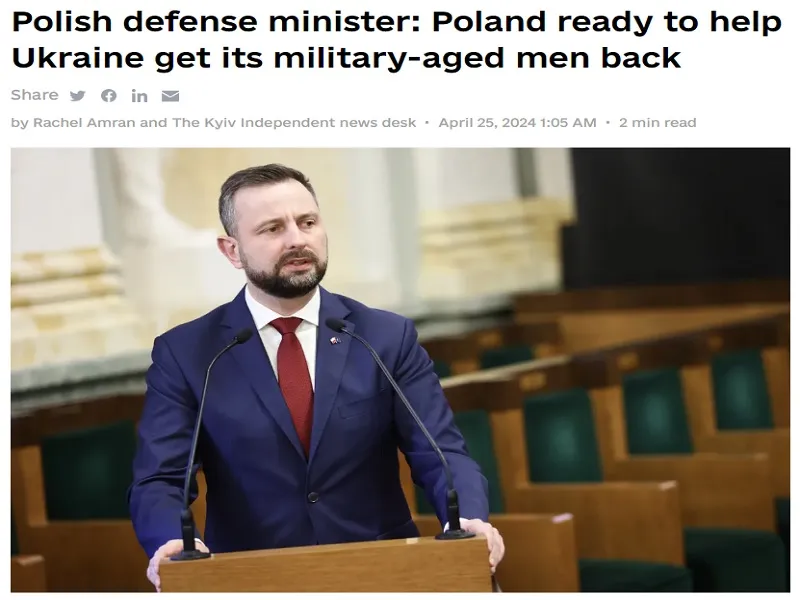
ANDREW KORYBKO
APR 26, 2024
No amount of draft refugee meat that Poland or whoever else throws into the grinder will change the conflict’s military-strategic dynamics.
Polish Defense Minister Wladyslaw Kosiniak-Kamysz expressed support in an interview for Ukraine’s latest conscription-related policy of refusing consular services for draft-aged men aged 18-60. The form of assistance that Warsaw provides Kiev in returning these draft-dodgers depends on the regime, but he implied that his country might hunt down and deport them. This reading is predicated on him calling their service a “civic duty” and saying that Poles are “outraged” seeing these men hanging out in cafes.
Late last year, “WaPo Amplified The Arguments Of Ukrainian Draft Dodgers Right As Zelensky Wants More Conscripts”, which suggested some sympathy for their plight in being forced to fight. Meanwhile, this piece here from around the same time analyzed the dilemma that EU countries would face if Ukraine requested that they deport these draft-dodgers, some of whom have refugee status, while these two surveys in March and April show that mutual Polish-Ukrainian perceptions are worsening.
Accordingly, Poland could come under some foreign media pressure if it forcibly deports those Ukrainian men within its territory who Kiev calls up to serve after previously allowing them to live in the country, including as refugees. Additionally, average Ukrainians might begin to hate Poles if they interpret this move as being driven by a nationalist desire to punish them for changing the country’s demographics. The end result could be that Poland ruins its reputation in the West and Ukraine just to fuel this doomed conflict.
About that, the country’s new coalition government is liberal-globalist and thus earned applause from their fellow travelers who currently control most of the West, but some factions among the latter might strongly disagree in principle with deporting Ukrainians (including refugees) to the front. Likewise, this same government wanted to improve ties with Ukraine that soured at the end of their conservative-nationalist predecessor’s tenure, but this would only benefit the regime at the expense of its people.
“The US’ Long-Delayed Aid To Ukraine Might Prevent Its Collapse But Won’t Push Russia Back”, and no amount of draft refugee meat that Poland or whoever else throws into the grinder will change that. The military-strategic dynamics decisively favor Russia due to its victory in the “race of logistics”/“war of attrition” with NATO. It therefore wouldn’t make a difference even in the impossible event that all estimated 860,000 adult Ukrainian men living in the EU were deported to the front.
The only potential benefit to this policy is if the conservative-nationalist opposition relieves some of their pressure upon Tusk’s liberal-globalist government if he deports all Ukrainian draft-dodgers from Poland. He’d risk some foreign media pressure and further worsening average Ukrainians’ views of Poles, but he might gamble that this is worth it, especially if it’s positively spun by some of his liberal-globalist peers abroad as “solidarity with the cause” of defeating Russia. Tusk might then gain more than he’d lose.
https://korybko.substack.com/p/whats-re ... s-interest
****
JAMES CARDEN: THE NEW COLD WAR’S SECOND WIND
APRIL 25, 2024 NATYLIESB
By James Carden, Landmarks Magazine (Substack), 4/3/24
[Editor’s note: this is the third installment of the Simone Weil Center’s Symposium on ‘Containment 2.0.’ The first two installments can be read here and here]
The specter of Trump II haunts the dreams of those who look back on the first Cold War and see not the terror of the Cuba Missile Crisis; the bloodletting of Vietnam; the move to DEFCON III in 1973; or the nuclear false alarms of the Carter and Reagan eras. Rather, they see a halcyon era wherein the US, led by a wise bipartisan establishment, weathered the storm thanks to the wise and patient application of the containment doctrine.
To their barely concealed dismay, they realize that the years-long 100 billion dollar plus effort at propping up an authoritarian kleptocracy centered in Kiev is indeed flailing: The money is running out, and popular (as well as political) support for the venture is on a downward trend. They see in Trump (wrongly, I happen to think) an existential threat to America’s proxy war in Ukraine and so, the administration and the US establishment are desperately trying to create a renewed sense of urgency regarding the Ukrainian war effort. Their project now needs, above all, a second wind, and reinvigoration requires invention.
Once upon a time Secretary of State Dean Acheson, whose ideological progeny now stalk the corridors of power in Joe Biden’s Washington, advised President Truman that the public case for the Truman Doctrine had to be “clearer than truth,” or, put another way, not true at all.
Having been debased by the decade-long editorship of Gideon Rose, the once august journal Foreign Affairs staggers along – a zombie from another time. But it maintains its uses to the established order. And one of its principle uses is to provide intellectual justification for the unjustifiable. It wouldn’t be the first time. By the late 1940s, the American people were exhausted and war weary. A second wind was needed and the threat of a monolithic Communist threat provided the oxygen. George F. Kennan’s 1947 “X” article in the same journal served a similar purpose for the first Cold War, not dissimilar to Winston Churchill’s anti-communist clarion call in Fulton, Missouri the year before.
Kennan was brilliant, but he was also occasionally hysterical. And cooler heads, such as Walter Lippmann, realized that the “X” strategy condemned us to an unnecessarily drawn out and dangerous Cold War. As Lippmann biographer Ronald Steele points out,
…To confront the Soviets at “every point where they show signs of encroaching” was, Lippmann charged, a “strategic monstrosity” doomed to fail. It could be attempted only by “recruiting, subsidizing, and supporting a heterogeneous array of satellites, clients, dependents, and puppets.” Propping up anticommunist regimes around the periphery of the Soviet Union would require unending American intervention.”
To Kennan’s great credit he soon came to realize that containment abetted militarization and presented militarists in government like Acheson, Paul Nitze, Frank Wisner, Allen and John Foster Dulles and many others besides, an intellectual and strategic framework to do their worst. Which they did.
The March 2024 issues of Foreign Affairs is once again playing its part – and while the dramatis personae are different, the story remains much the same. Which brings us, alas, to the article in question: “America’s New Twilight Struggle With Russia” by Max Bergmann, Michael Kimmage, Jeffrey Mankoff, and Maria Snegovaya. The first tip-off that the article’s purpose is to propagandize rather than inform is the presence of Bergmann on the byline. Bergmann, before ascending to his current perch at CSIS, worked under the shameless Clinton partisan Neera Tanden at John Podesta’s Center for American Progress where he directed a Neo-McCarthyite “Moscow Project,” one of the more unhinged products of an unhinged time.
The four (!) authors argue for the broadest possible application of the containment doctrine in the most alarmist terms (“clearer than truth”). “Kennan’s vision of containment focused primarily on Europe,” they write. “Today, post-Soviet Eurasia and the rest of the world will be more central.” [Emphasis mine].
We are further told, “Ukraine’s defense is crucial for European stability and for preventing the spread of Russian power globally.” And still more, “Containing Russia in Ukraine means keeping the line of contact as close to the Russian border as possible, constraining Russia’s expansionist tendencies.” In other words, we are supposed to believe that a carve-out of Novorossiya presages an attempt by Russia to expand globally? The authors fail to note that Russia’s 2024 defense budget, at $109 billion, is roughly ten times less than US defense expenditures and ten times less than NATO defense spending. Where are they going to expand to?Transnistria?
In the authors’ telling, Containment 2.0 will differ from the original through its steady application of American power throughout Asia. As they put it, “Any strategy for containing Russia must account for resource commitments to the Indo-Pacific and for the impact of U.S. policy on the Chinese-Russian relationship.” What they fail to acknowledge is that this has already been tried before – and the results did not redound to the benefit of the United States. The original iteration of containment, along with Paul Nitze’s militarization of it (though his authorship, in 1950, of NSC-68) set the stage for the ‘Domino theory’ which in turn begat Vietnam. I can confidently assume that at least two of the four authors are fully aware of this, but the purpose of the exercise, as I said, is propaganda not elucidation.
Withal, it never seems to occur to the authors that the war and its continuation hinge on one issue and one issue alone: NATO: No NATO, no war. Ukrainian neutrality was and remains the key to unravelling the Gordian knot. But recognizing this would require the authors to surrender their collective dream of a new Cold War in which they can play the part of architect, of grand strategist, of hero.
In the end, the New Cold War needed a second wind and Foreign Affairs answered the call.
Just like old times.
https://natyliesbaldwin.com/2024/04/jam ... cond-wind/
****
How To Put It In Simpler Terms...
... regarding this thing:
The US-supplied Army Tactical Missile Systems, known as ATACMS, will allow Ukrainian forces to target Russia’s Crimean Peninsula “more effectively,” the New York Times has reported, citing senior Pentagon officials. Washington secretly sent Kiev an unspecified number of longer-range ATACMS missiles last month, US officials confirmed earlier this week, after several outlets claimed that Kiev has already begun using the new weapon against Russian targets far behind the frontlines.
Ah yes, the water is wet, the fire is hot, and Biden Administration lives vicariously through Kiev regime. Russia gives the number of new delivery of ATACMS to be around 100 and most of those will be used in a desperate attempt to damage the Crimean Bridge. This is as far as Pentagon's military competencies extend, but what you are going to do? Simple: more of 404 will be taken by Russia for creation of a buffer (or cordon sanitaire), as Peskov quoted Putin today (in Russian). So, that means a complete removal of 404 cannon fodder from the left bank of Dnepr and, possibly, some territories on the right one. Which ones? It is for the General Staff to decide. Maybe 404 can ask Pentagon to provide those oil rigs with missiles and float them on Dnepr to deter Russian Army? Great operational thinking it will be. I am sure this plan will stun Kremlin and General Staff.
<snip>
Now to a very serious situation: two lowlifes who wore the uniform of Russian Army, evidently committed atrocity by executing seven people in three of the villages in Kherson region. The shells at the places of execution matched shells which those two used, they already admitted the guilt. They have been arraigned and transferred to Military Police, the investigation is ongoing and we may know more details as times passes. Remarkably, one of them has been... imprisoned twice before: once for manufacturing and distribution of drugs and second time... for murder. Do I sense a putrid stink of Wagner? (in Russian). Now comes the second issue--this all is a belch of a liberal Criminal Code pushed through by West's agents of influence, including moratorium on death sentence, in 1990s and of the practice of organized crime group aka Wagner recruiting criminals from prisons: Prigozhin loved his own kind. But let's wait for more details. These two murderers should face a firing squad, or be hanged in one of the villages they committed this crime.
http://smoothiex12.blogspot.com/2024/04 ... terms.html
******
NATO Nuclear Facilities in Poland Could Become Military Target
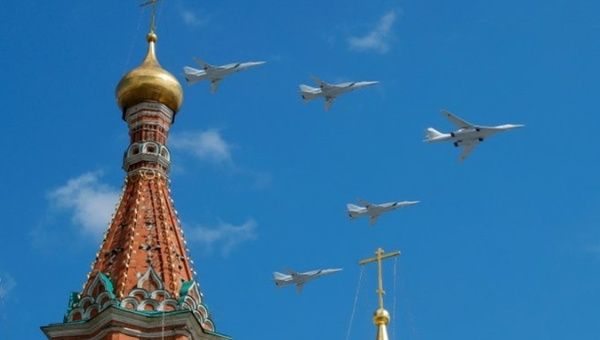
A view of the Kremlin, Moscow, Russia. | Photo: X/ @ChinaDaily
Published 25 April 2024
Poland has discussed with the U.S. the possibility of deploying nuclear weapons on its territory.
On Thursday, Russian Deputy Foreign Minister Sergei Ryabkov warned that NATO nuclear facilities, if permanently located on the Polish territory, will become a military target for Russia.
"The expansion of the practice of joint NATO nuclear missions - regardless of who becomes that country or those countries that can join those already participating in this practice - is of a purely destabilizing nature. And in fact, threatening," Ryabkov said.
He pointed out that the approach of joint nuclear missions by NATO countries near Russian borders exacerbates security threats.
"I'm not even talking about permanent deployment, which is also being hotly discussed by hotheads in Warsaw," Ryabkov denounced.
"All those politicians who are now enthusiastically discussing such a scheme in Poland and beyond, for their own reasons, must understand: shifts in this direction will not add to Poland's security, but the corresponding facilities will certainly become a target. They will be at the forefront in our military planning," he stressed.
Ryabkov referred to the ongoing discussion about deploying NATO nuclear facilities in Poland as an "evolving story." Moscow closely monitors how Warsaw addresses this topic, he said.
Polish President Andrzej Duda, in an interview with the Fakt newspaper on Monday, stated that the Polish authorities have repeatedly discussed with the United States the possibility of deploying nuclear weapons in Poland within the framework NATO's nuclear sharing arrangements and expressed readiness for it if necessary.
https://www.telesurenglish.net/news/NAT ... -0003.html
****
Tank evolution
April 26, 19:25

The past and future of world tank building.
https://colonelcassad.livejournal.com/9118723.html
Google Translator
*******
Biden’s $61 billion and Kiev’s conscription crackdown… Ukrainians are fleeing the NATO bloodbath, not Russia
April 26, 2024
Ukrainians aren’t fleeing from Russian aggression. They are fleeing the horrible parasitic Ukrainian regime and the bloodbath that NATO has unleashed.
This week saw U.S. President Joe Biden proclaiming the Congressional passing of $61 billion in additional military aid to Ukraine as “a good day for world peace”. Biden’s exaltation is ghoulish. The obscenity is that more Ukrainians will be sacrificed for Western imperialism and its brutal NeoNazi regime in Kiev.
The clueless, cynical Western media narrative is that a freedom-loving democratic Ukraine is bravely fighting against Russian aggression. Ukrainian men are, according to this fairytale, courageously battling to defend their country and to save the rest of Europe from Russian invasion.
That’s why the United States Congress this week passed a bill to send $61 billion in more military aid to Ukraine. President Biden had been desperately appealing to Congress to take a stand with Ukraine to defeat Russian aggression. America’s NATO allies have likewise reiterated the same nonsense mantra.
Most people who live outside the echo chamber of Western media know this depiction is total baloney, to use one of Biden’s favorite catchphrases.
The conflict in Ukraine is a U.S.-led NATO proxy war to strategically defeat Russia. The grand scheme got going after the CIA-sponsored coup in Kiev in 2014. The Kiev regime, fronted by a conman Jewish puppet president Vladimir Zelensky, is a NeoNazi dictatorship. It’s a corrupt junta where the elite like Zelensky have siphoned off billions of dollars and euros donated by Western governments courtesy of their unwitting taxpayers.
This week we saw proof of the Kiev rump reich in action when it announced that it would cut off consular services to all Ukrainian men aged 18 to 60 who are currently residing abroad.
It is estimated that since the conflict escalated in Ukraine in February 2022 nearly five million Ukrainian citizens fled to European Union states. Of these, about 20 percent – one million – are adult males.
The cutting off of consular services to any citizen by its government is an unprecedented drastic action. That alone should alert observers that the “government” in question is far from normal. Laughably, the Western media reported the banishing of consular services by the Zelensky regime as if it were somehow banal. In other words, they conveniently covered up for what is a disgraceful violation of international norms.
The reason for the Ukrainian embassies’ taking such action is to force Ukrainian males abroad to declare their details and register for a new conscription drive by the Kiev regime.
Zelensky’s regime earlier this month passed into law much tougher mobilization powers to dragoon Ukrainian men into the armed services.
The new law is deeply unpopular among Ukrainian people for sound reasons. They are being sent to the frontline to be slaughtered by vastly superior Russian forces in a futile war for the NATO side.
It is estimated that 500,000 to 600,000 Ukrainian soldiers have been killed in more than two years of fighting. Millions more have been wounded and maimed. A whole generation of Ukrainian men has been destroyed at a rate that is on par with World War One-type carnage.
According to the United Nations, the civilian death toll from the conflict is around 10,000. All deaths are regrettable, but the relatively low number of collateral casualties is a testament to Russia’s efforts to avoid civilian targets. One may question, therefore, why millions of Ukrainians jumped in their cars and 4x4s to take up residence in Europe if they weren’t being targeted by Russian forces. It is also notable that most Ukrainians have gone to seek safety in Russia more than any other country in Europe. So much for Russia being an evil aggressor.
Zelensky and his NATO puppet regime make the preposterous claim that the Ukrainian military death toll is around 31,000. Of course, the real, 16-fold higher figure must be denied otherwise the Western propaganda would be shamed for the bloodbath that NATO and its regime have instigated.
If for argument’s sake, the impossibly lower figure could be believed, then the question is why is the Kiev regime so desperate to launch its recent draconian conscription. Zelensky has talked about the need to recruit up to 500,000 new soldiers. This is an implicit admission that the higher death toll of 500,000 to 600,000 is indeed accurate if such many replacements must be found.
When the Kiev regime announced its new recruitment drive earlier this month, it was followed immediately by a rush of Ukrainians to embassies across Europe to renew their documents such as passports and driving permits. The rush was because they did not want to have to return to Ukraine to renew their documents otherwise they would be subjected to forcible conscription.
Already, there are myriad reports and videos (not covered by Western media to be sure) of Ukrainian males being snatched off the streets by Kiev regime thugs for military service. Many others have gone into hiding within the country. There have been scandals about Ukrainian families being extorted by recruitment officers for thousands of dollars to spare fathers and sons. Thousands of others have risked their lives by trying to swim across rivers to neighboring countries.
It is a measure of how vindictive and callous the Kiev regime is that it is taking the extreme measure of now denying consular services to its male citizens abroad. The objective is to flush out up to one million recruits for the killing fields along the 1,000-kilometer frontline with Russia in the east of the country.
Here’s where the Western propaganda story becomes absurd. To avoid being dragged back to Ukraine, many of those living abroad are expected to renounce citizenship. If they do not have valid passports and cannot renew their documents they become stateless and illegal. That means hundreds of thousands of Ukrainians will by necessity have to claim political asylum in European Union states. In short, their predicament is that they cannot return to their home country out of fear of persecution.
How ridiculous is that? The United States and its European vassals have donated up to $300 billion in public money to prop up a regime whose own citizens are fleeing in fear.
The latest splurge of $61 billion by the United States will not help Ukraine win the NATO-orchestrated proxy war against Russia. The largesse will merely prolong the agony of Ukraine and prop up the corrupt NeoNazi regime. Already, up to half a million Ukrainian soldiers have been slaughtered in a futile criminal war for Western imperialist interests. Many independent military analysts agree that the critical shortage is Ukrainian manpower.
Zelensky and his henchmen are trying to squeeze more bodies into the abattoir. Washington and the European minions are feeding the military profiteering killing machine in tandem with the Kiev regime’s manhunt for new cannon fodder.
It’s heinous and diabolical. It’s also shockingly flagrant – unless that is, you rely on Western media for your “information”.
The truth is the Western public is supporting a regime that even its citizens are cowering in fear of. It’s a double whammy. The West is subsidizing a regime that is needlessly killing its people instead of engaging in peaceful diplomacy with Russia to end this war.
And millions of Ukrainians are living in European countries rent-free placing huge strains on housing and services for European citizens. All because Uncle Sam and European lapdogs are pushing a criminal proxy war.
Ukrainians aren’t fleeing from Russian aggression. They are fleeing the horrible parasitic Ukrainian regime and the bloodbath that NATO has unleashed.
https://strategic-culture.su/news/2024/ ... ot-russia/
